July 2, 2023
Martha O'Kennon
Well, Summer is here and promising to be here with a vengeance. We did have a day of rain, which means at least the Black Raspberries are juicier than usual! Today is supposed to be a bit cooler, and then back to July! A couple of days ago, huge patches of these orange Day Lilies opened up all over town.
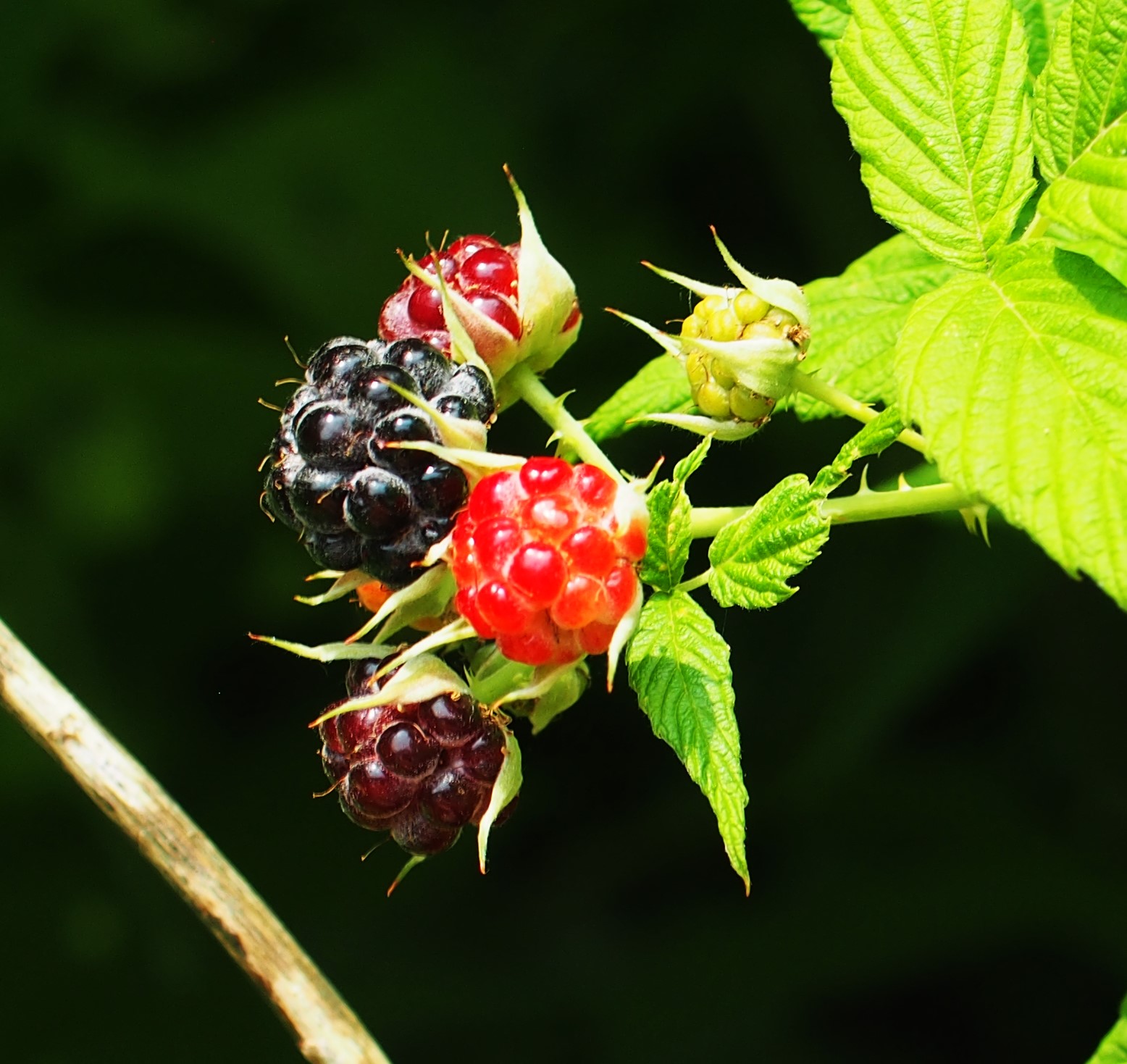
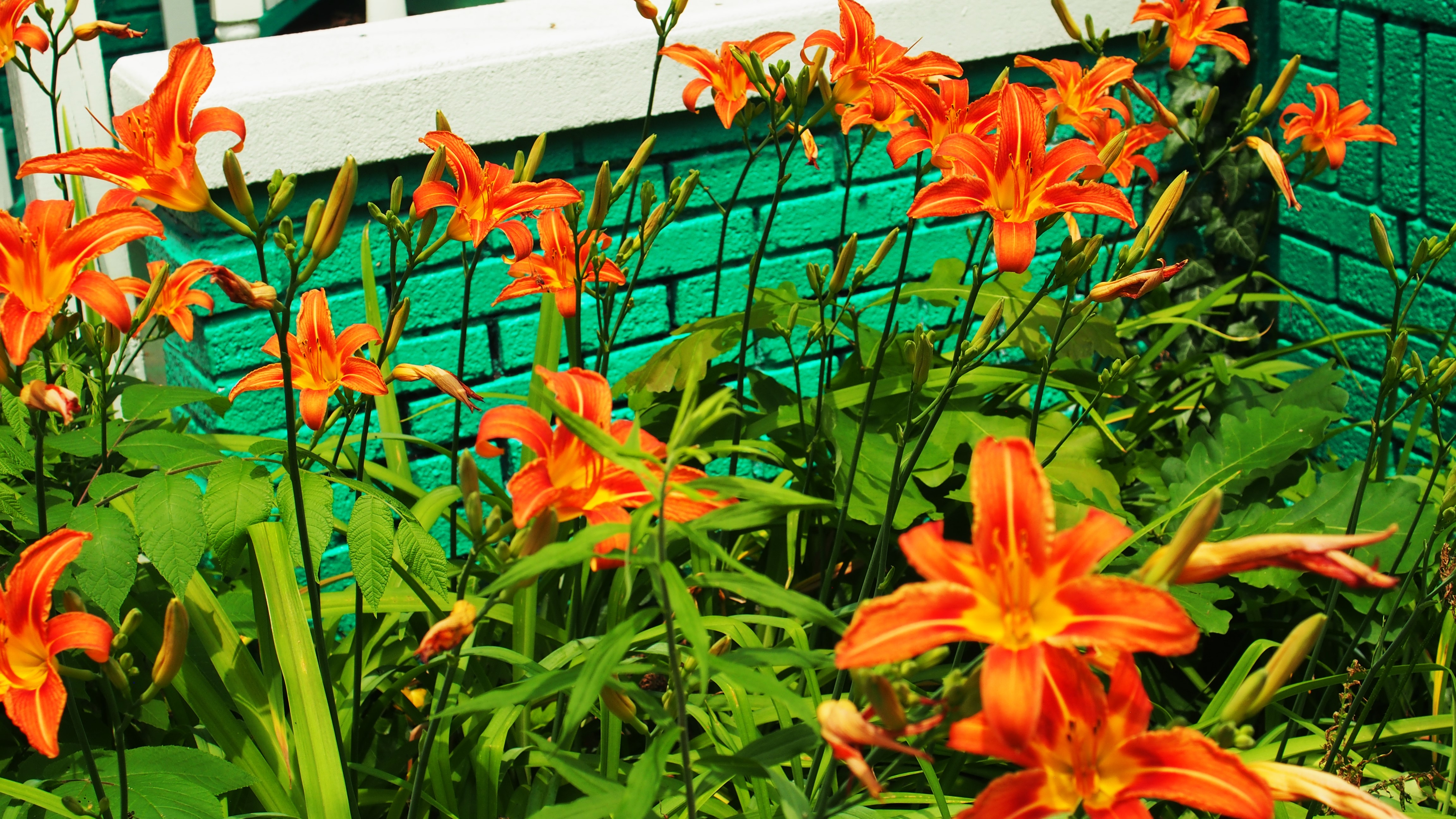
Remember that there is information in the name of the file for each image. You can see it by mousing over the image - look at the lower left of the screen. Or you can
click on the image to get to the (usually) larger image. Then the info is displayed in the address line above. Sometimes the second click will actually display a different view of the
original image.
The Ants were eclipsed by other creatures, and the Aphids had gone missing (sorry!) so let's move on to the Beetles. Here is a real treat - it's the Flower Beetle Strangalia famelica, which I usually associate with the appearance of the Goutweed. But this year it was seen on a much taller plant and hard to miss. Next is a Creature I've not seen for years, although it used to be a much more prevalent pest, the Japanese Beetle! Here it is seen on those Poppies in the deck box. Third, the Asian Lady Beetle.

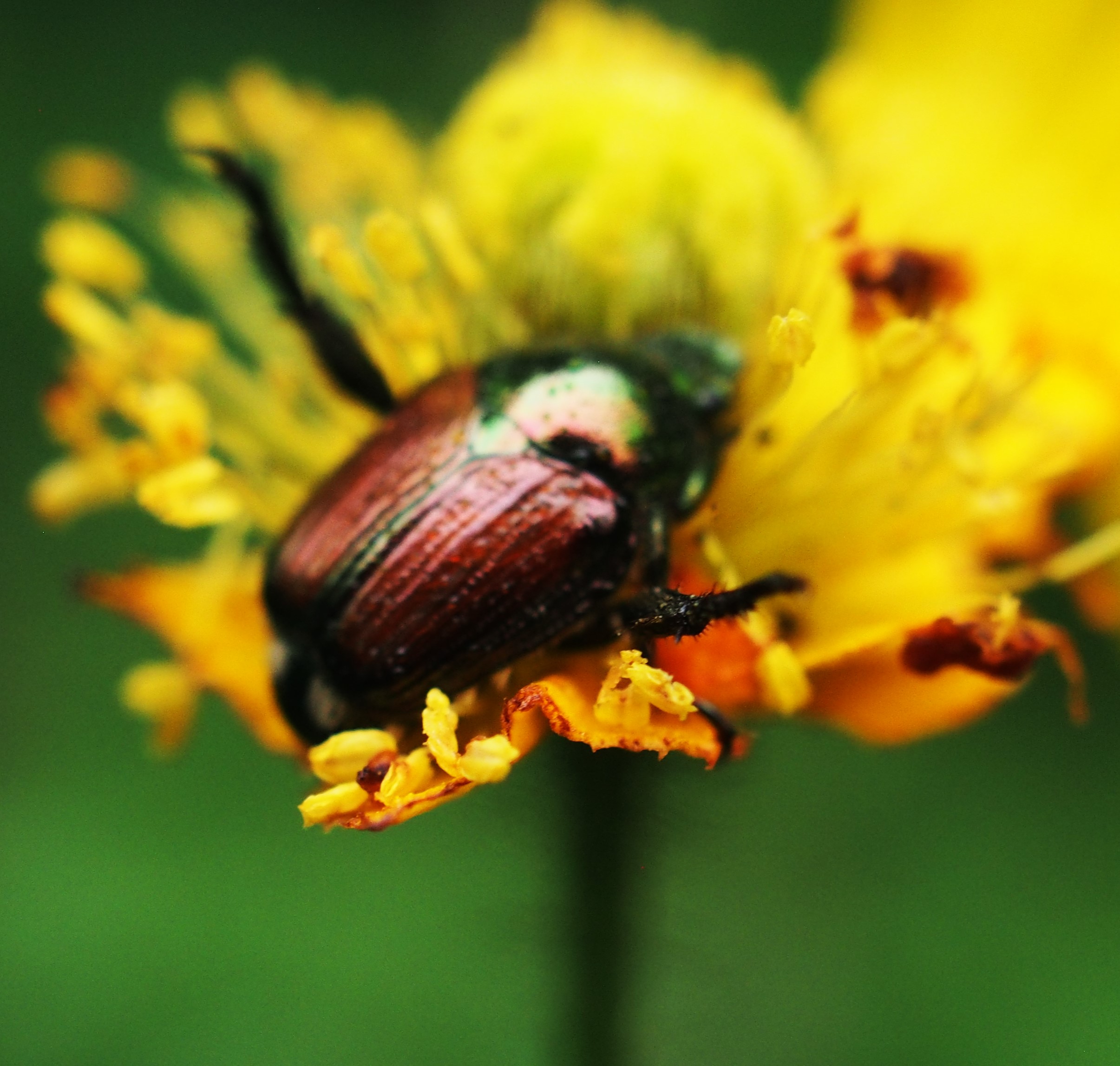

First here is Oberea flavipes, a member of the Flat-faced Longhorn Beetles. The next two are Weevils: the Redbud Bruchid and another tiny Weevil in the Anthonomus genus.
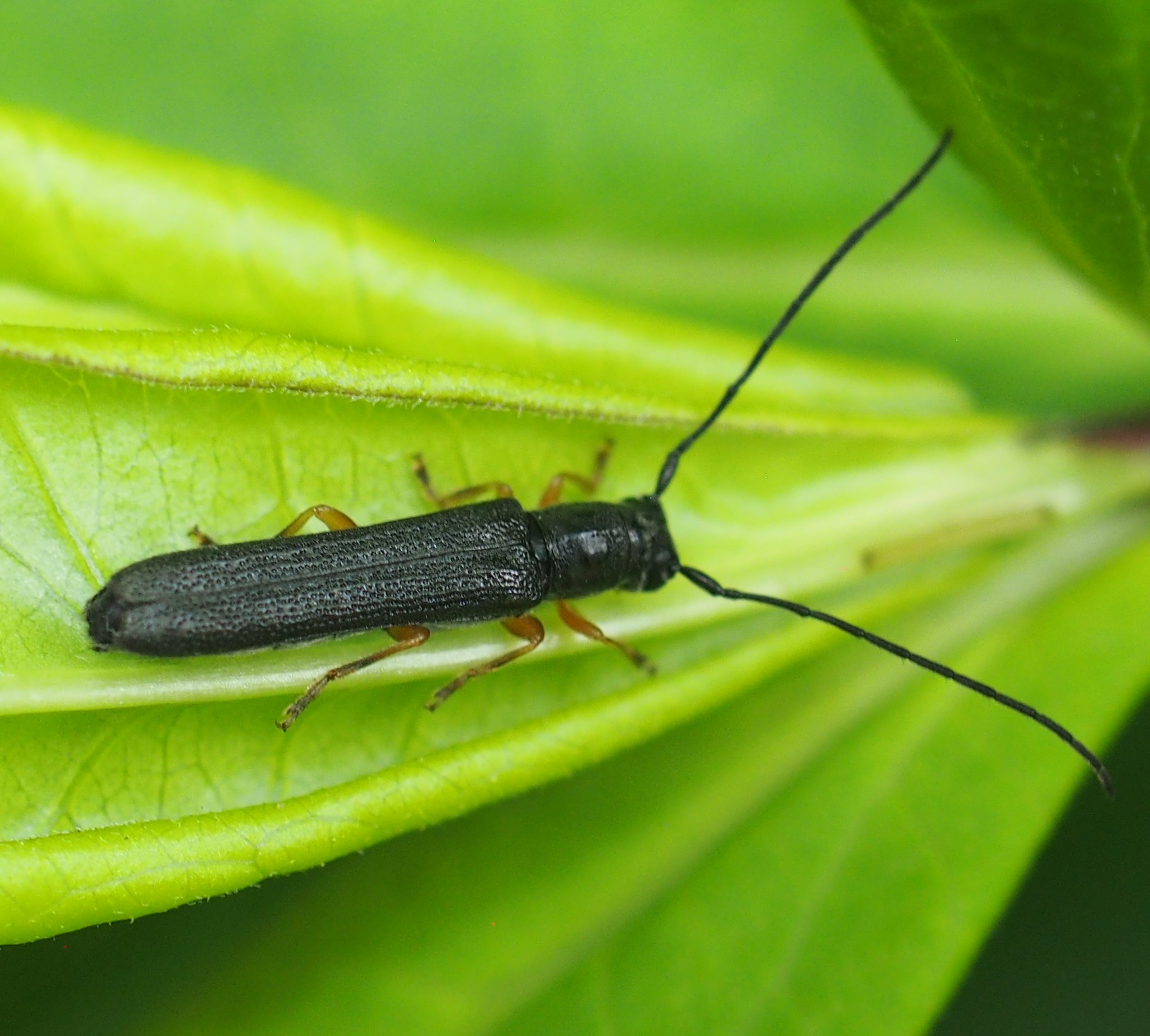
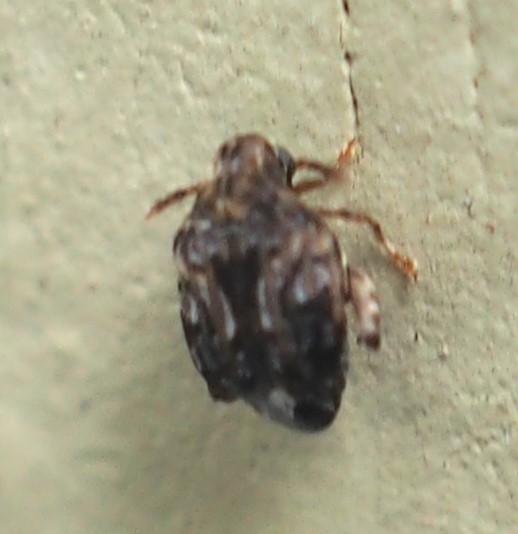

Moving on to the Bugs, I didn't see any Assassin Bugs all week, but there were a lot of Leafhoppers. This first little fellow is Pediopsoides distinctus, which I used to go for years between sightings. This is the second one I've seen this season! Next is (I believe) another of those pointed-face Aphrodes, and so is the next one.

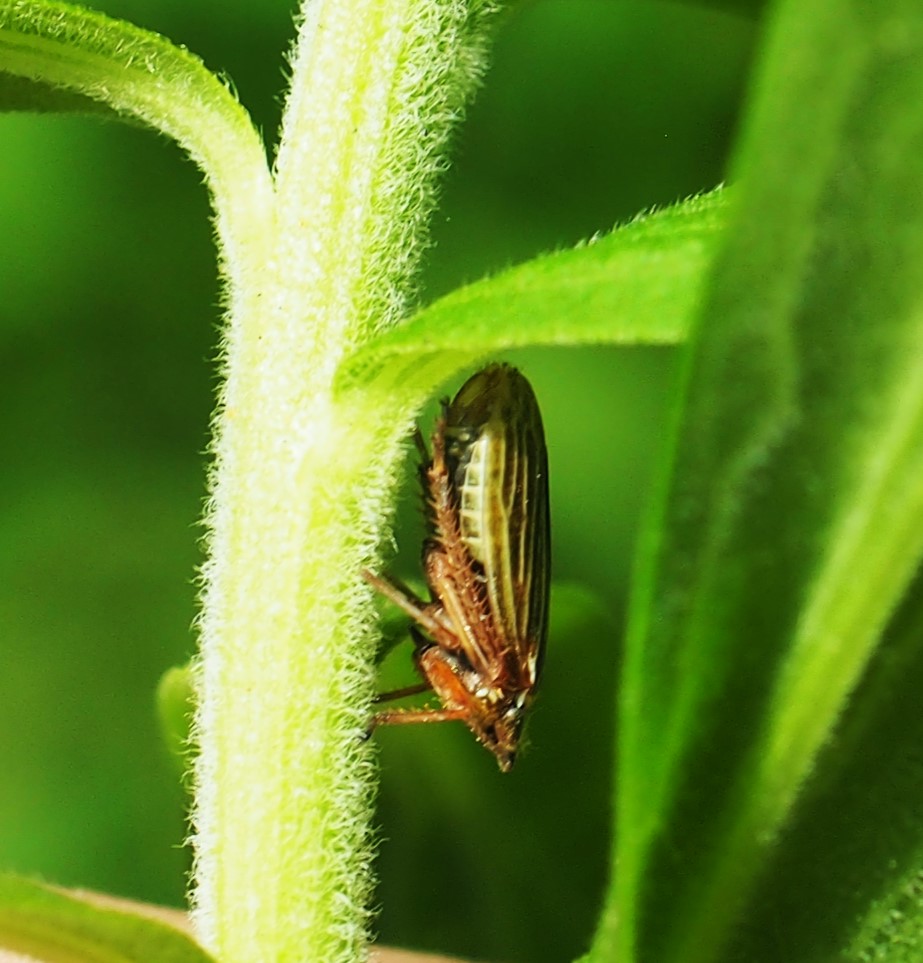
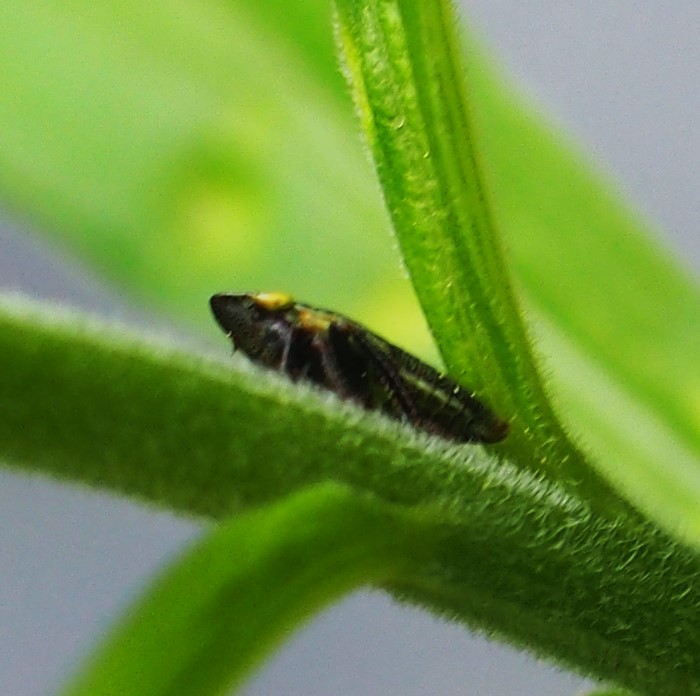
Another Leafhopper, this one of genus Scaphoideus. Next is a Treehopper, the Two-marked Treehopper. You may remember seeing its nymph last week (picture 3). Although at first that nymph doesn't much seem to resemble the adult, you can see the beginnings of the "thorn" at the right of its head (we used to call this Treehopper the "Thorn Insect").
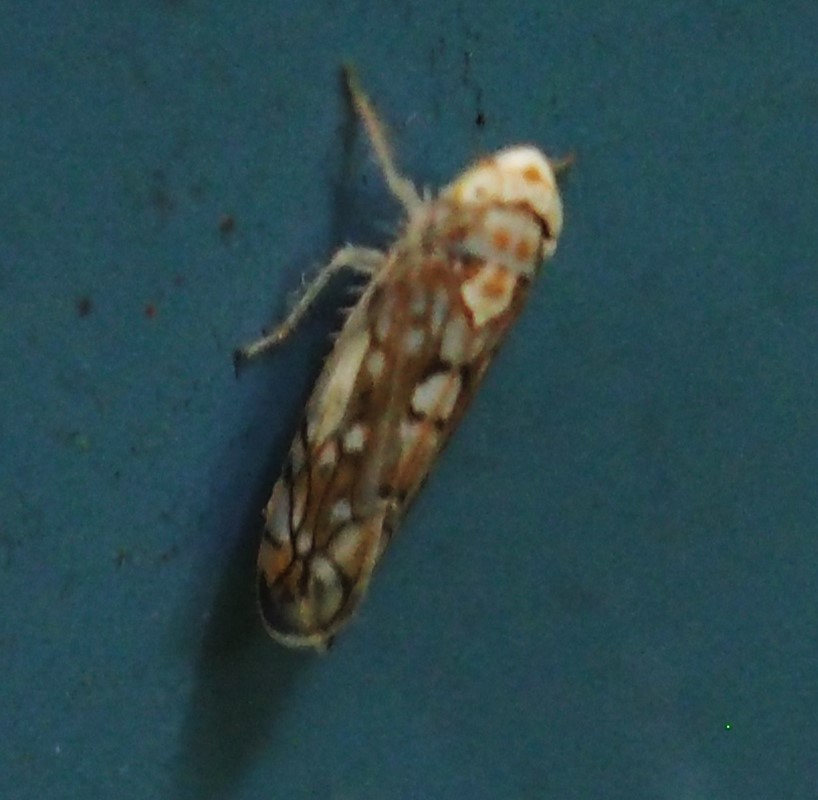
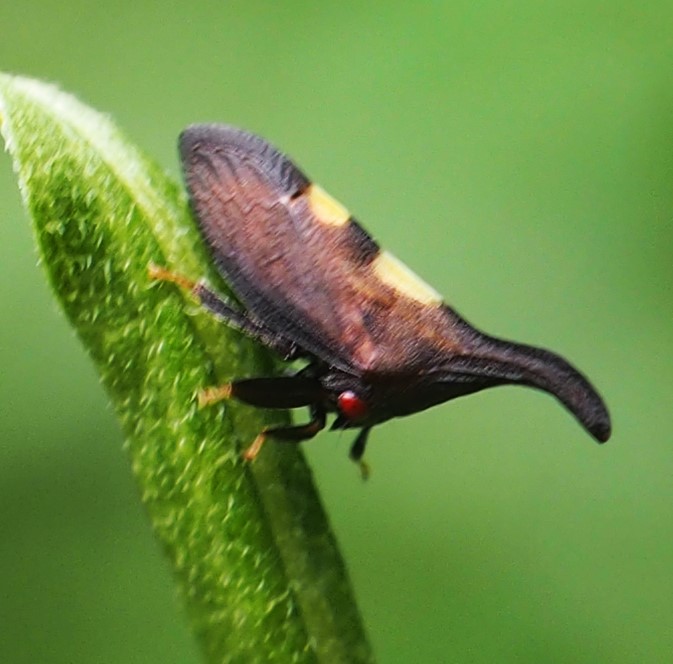

There were a few Plant Bugs, including the far-from-obscure Obscure Plant Bug (two pictures).
The third shot is of a nymphal Bug which I think is the most amazingly cartoon-worthy picture in this blog. It is being preyed upon by a Spider. For orientation purposes, the Bug's eyes are at the bottom.
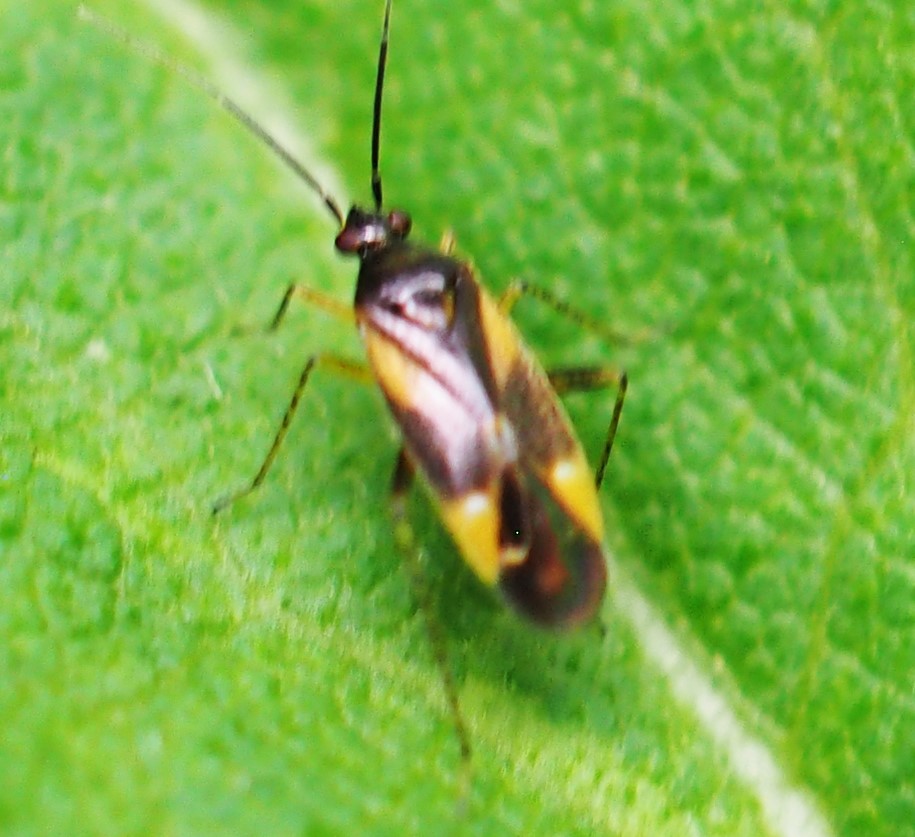
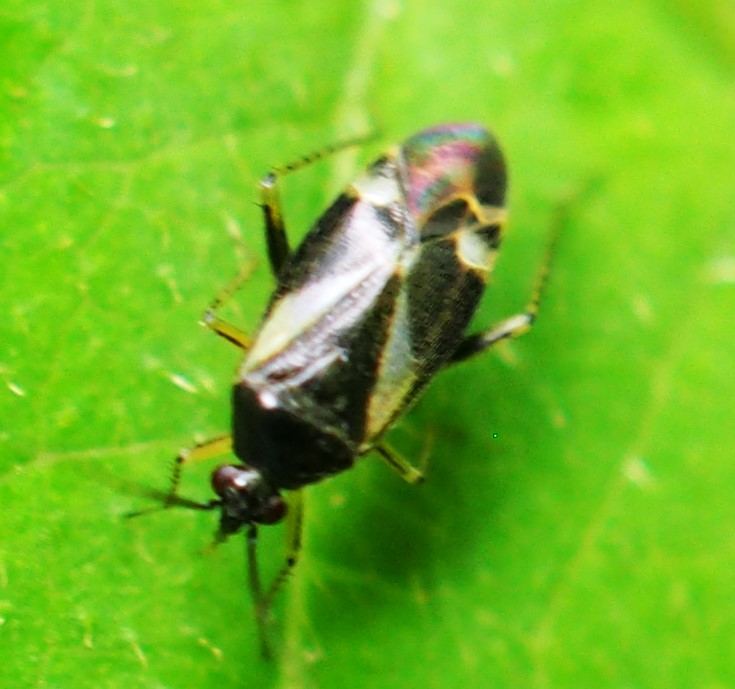
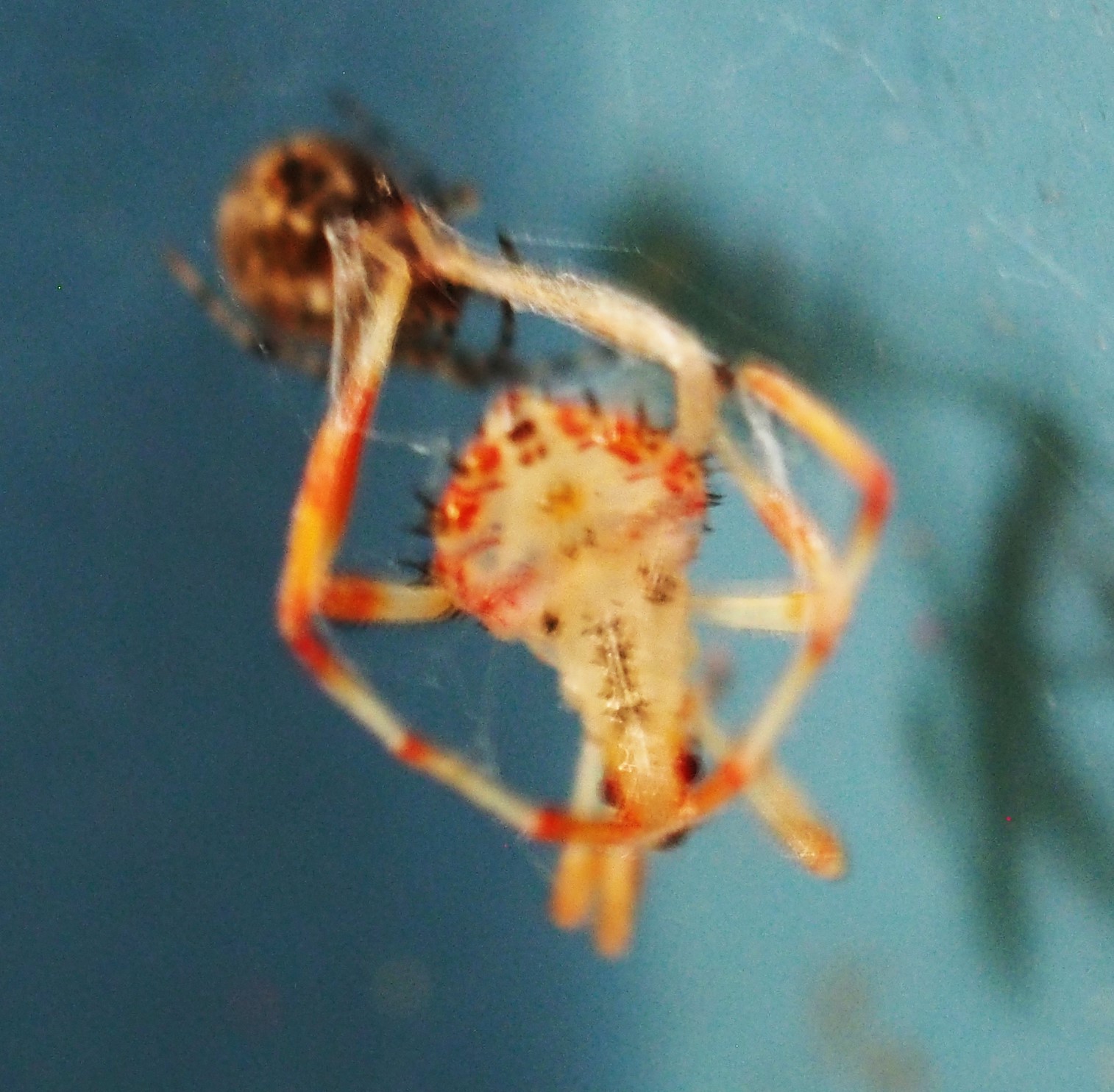
Although I mentioned at the top of the "Bugs" section that I didn't see any Assassin Bugs (Zelus luridus), we did see another kind of Assassin, namely the Thread-legged bug Empicoris errabundus. The head and grasping arms are at the lower right. You might remember that we saw an earlier nymphal version of this Bug (picture 2) back in April 10 of this year. Before we move on to the Barklice, here are a set of eggs that seem to be laid in the fashion of some of the bigger Bugs.
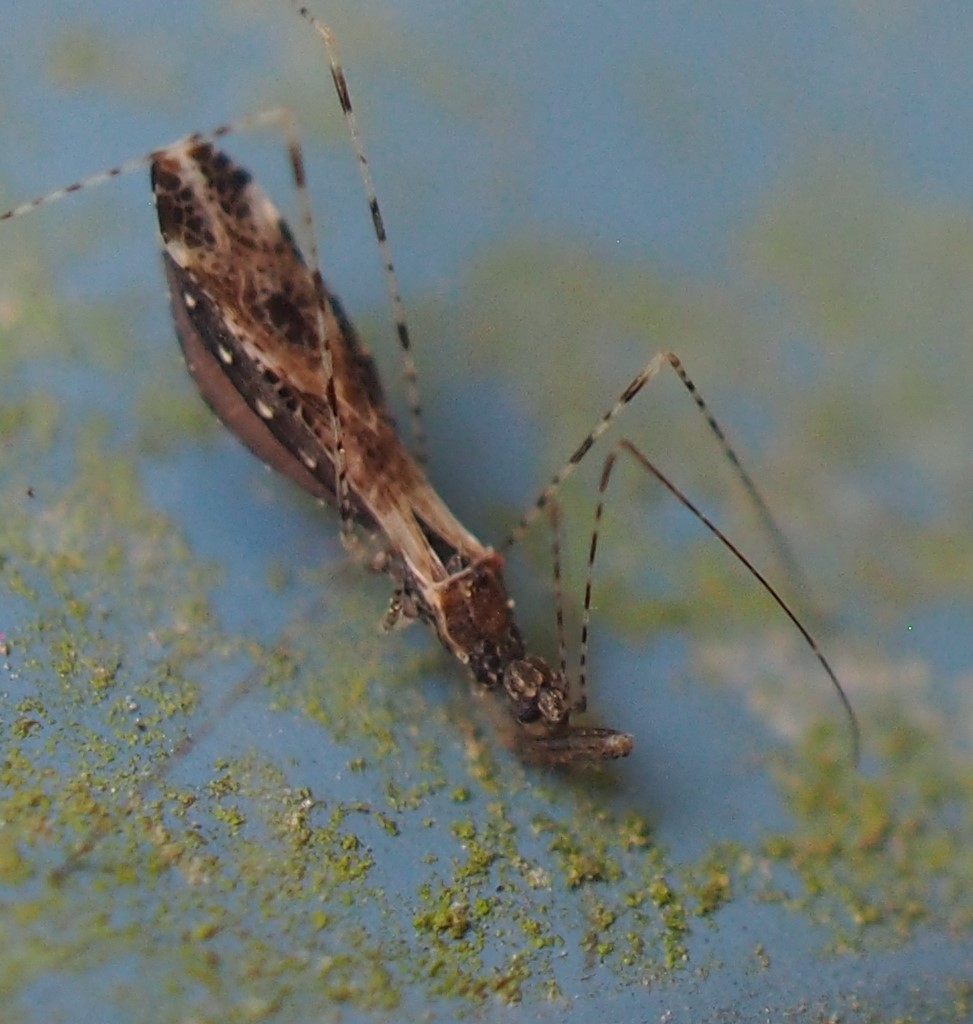
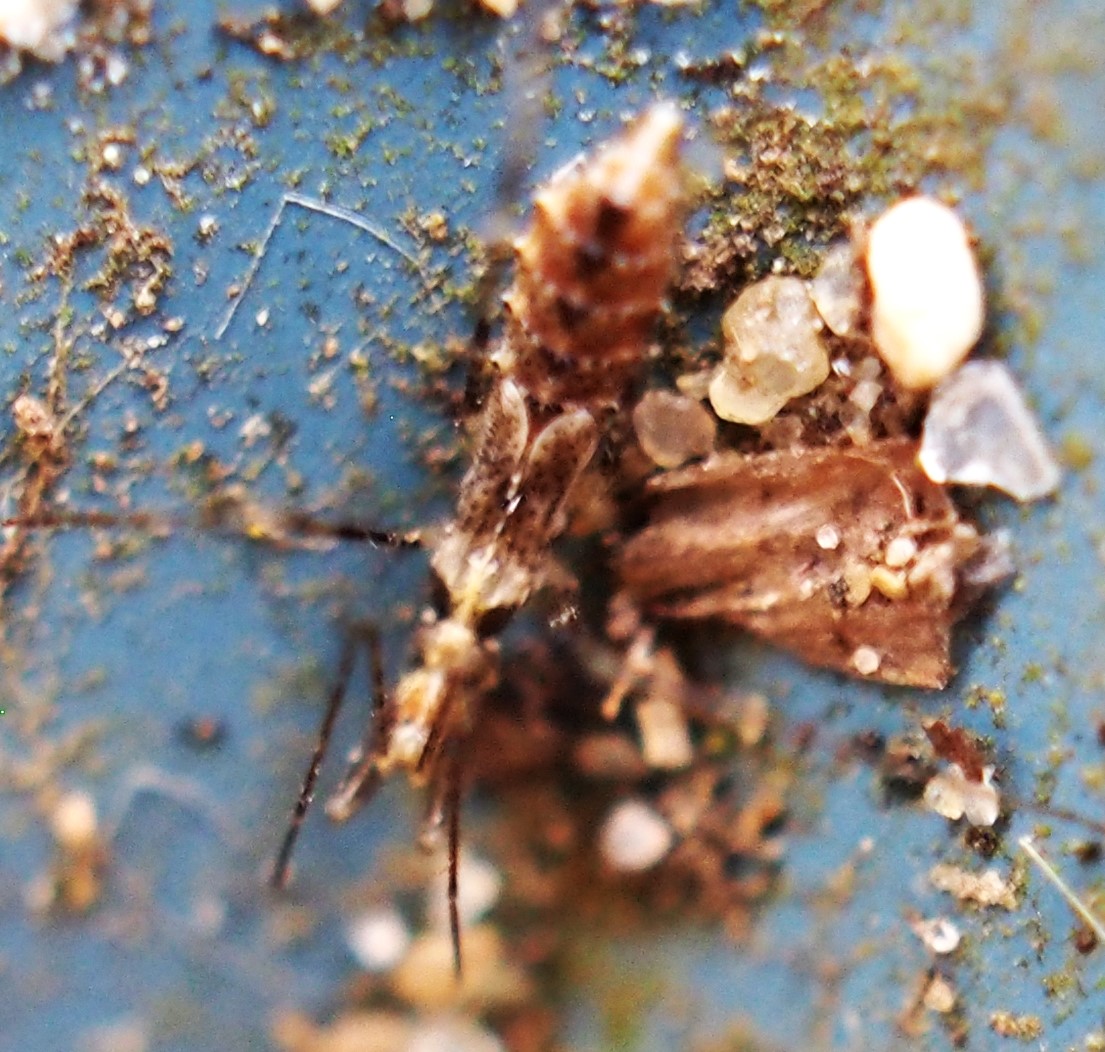
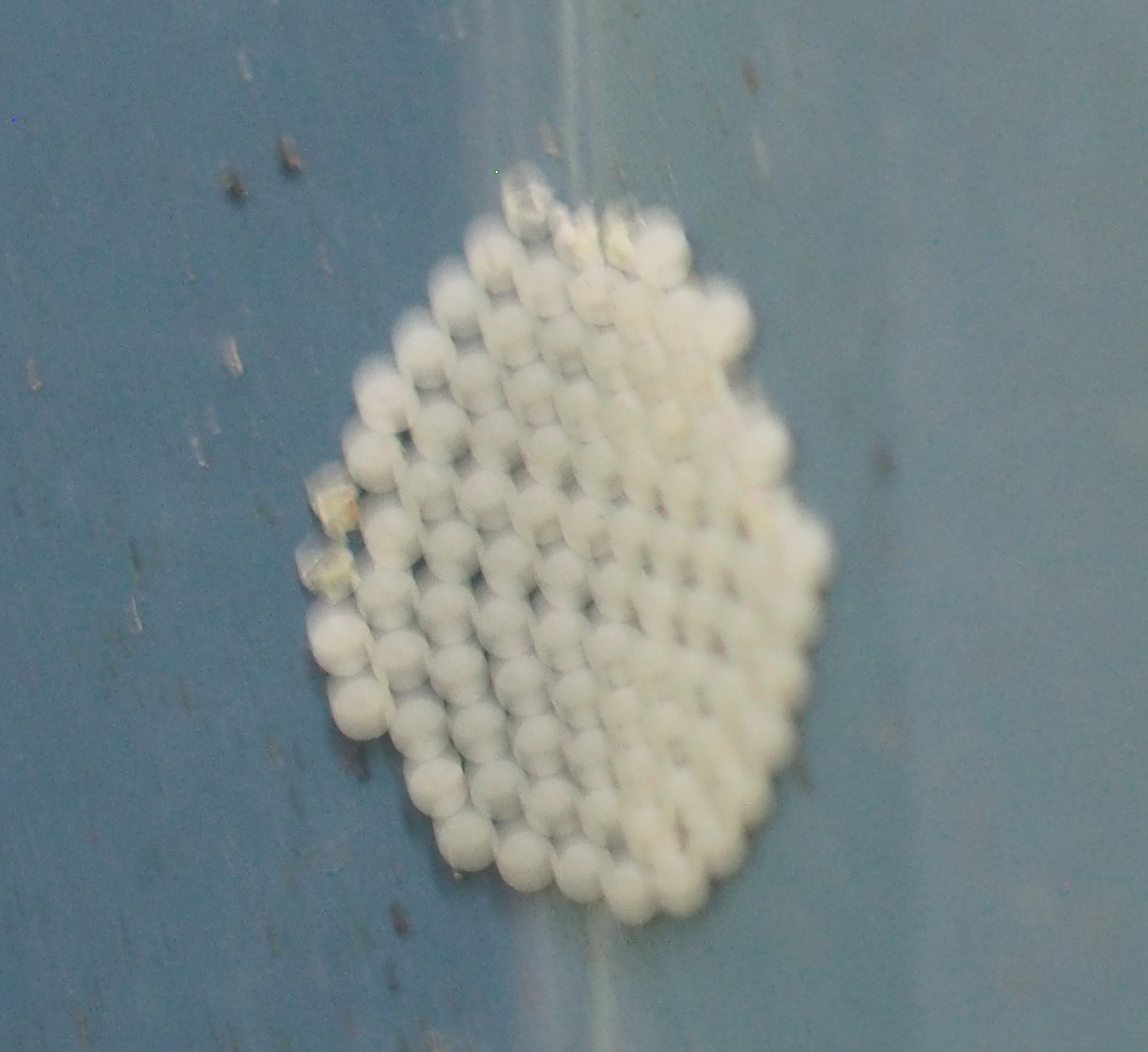
Let's move on to the Barklice. This week the story was carried by the many pictures of females laying eggs, tending eggs, and laying more eggs. If I had to guess what will be happening, it would be that
the eggs hatch and the nymphs grow and then the story continues. By the way, I was told by Diane Young that the females can reproduce parthenogenetically, that is to say, without the benefit of being impregnated by males.

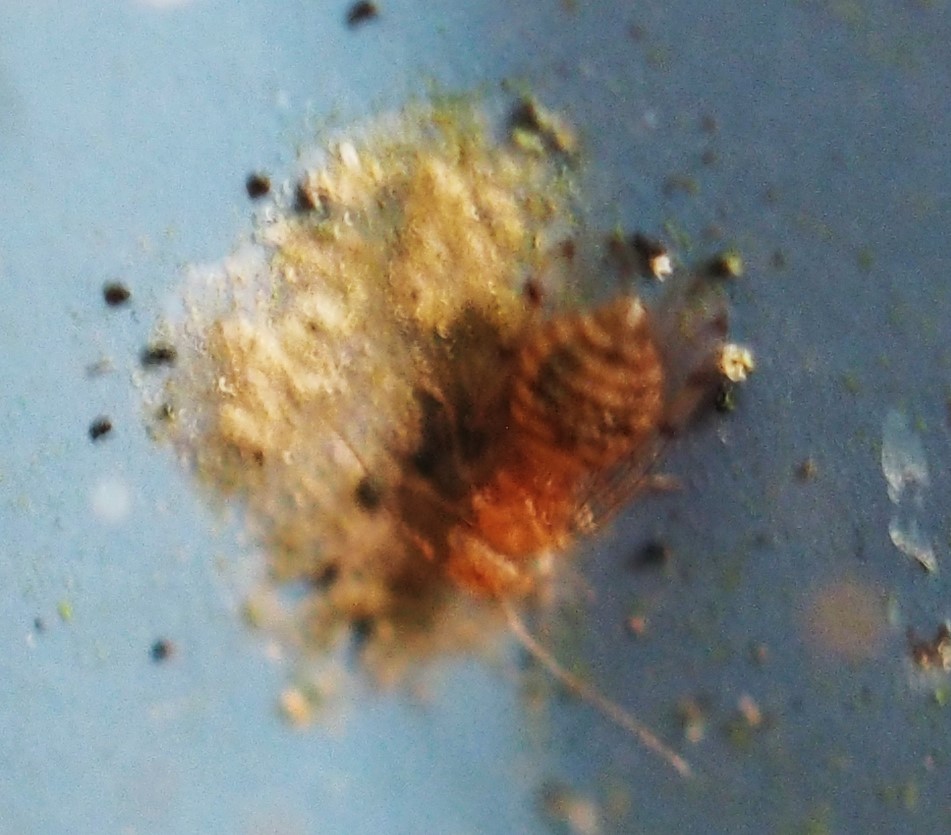
The next most common Barklice this week had to be the Polypsocus Corruptus (the Corrupt Barklice, though who knows who invented that name for them!). I don't think I've seen any males yet - these all have red eyes and if I remember correctly, the males tend to have black eyes.
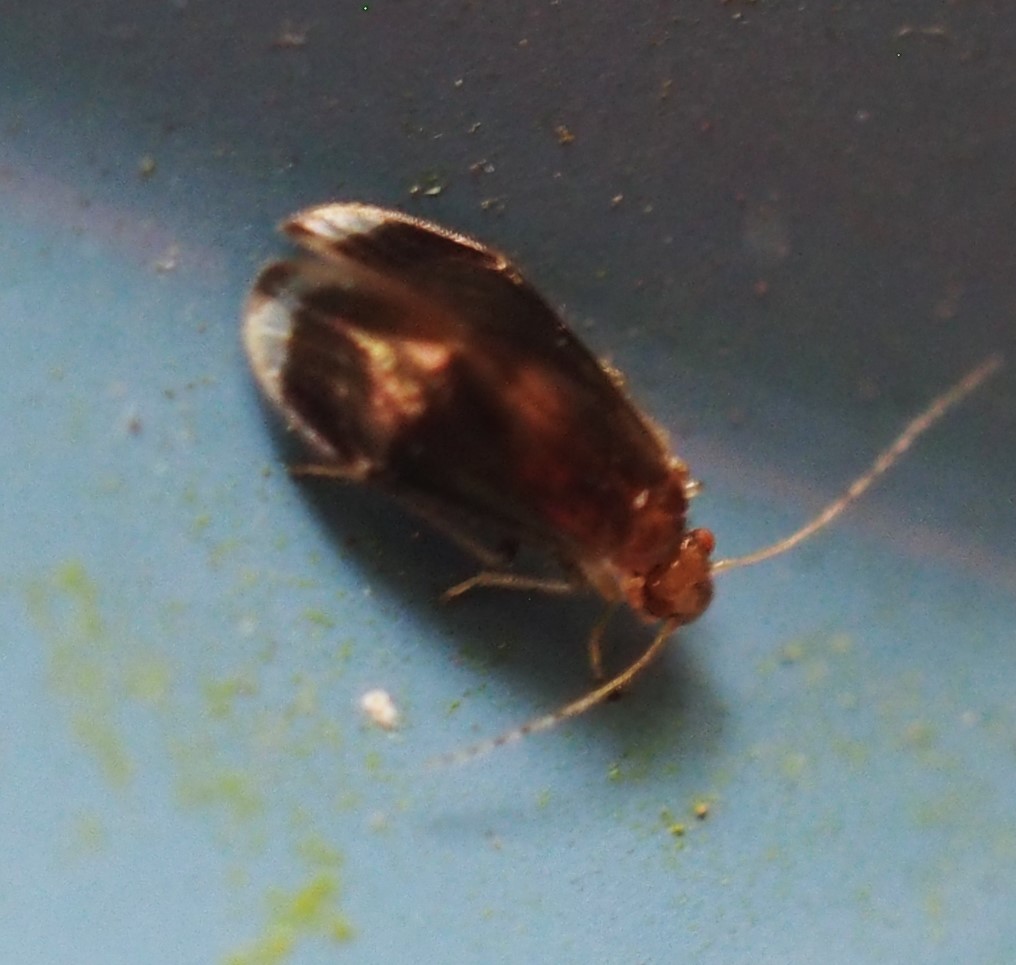
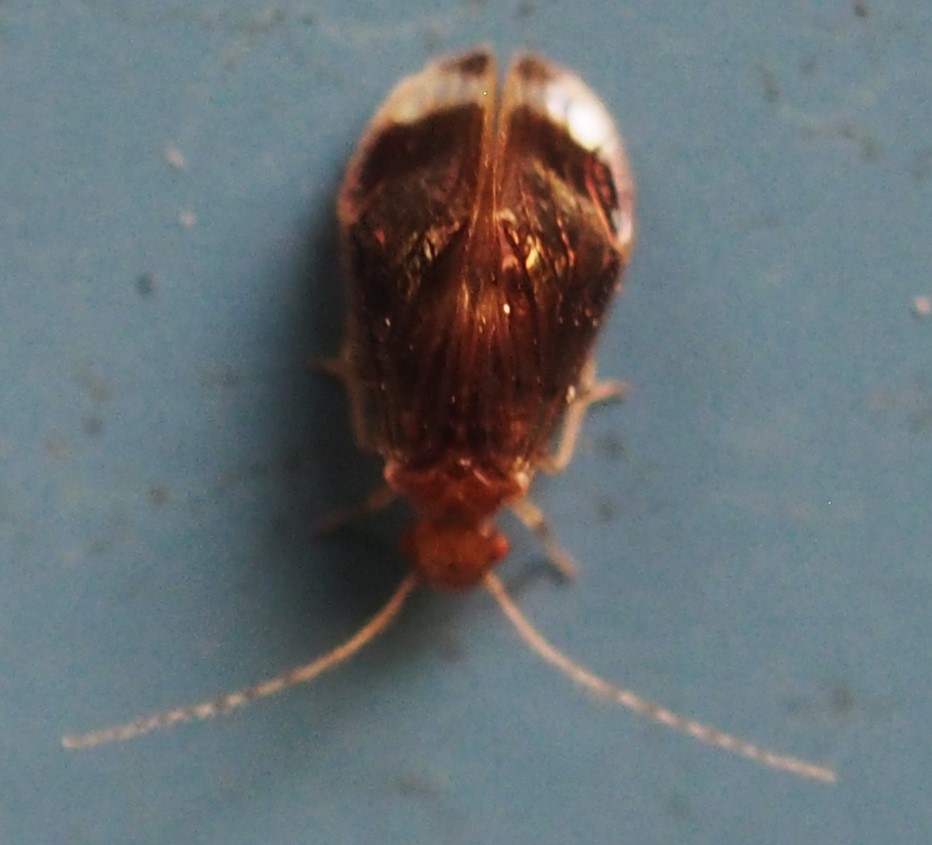

The Metylophorus novaescotiae nymphs were fairly far along when I started seeing them this year.
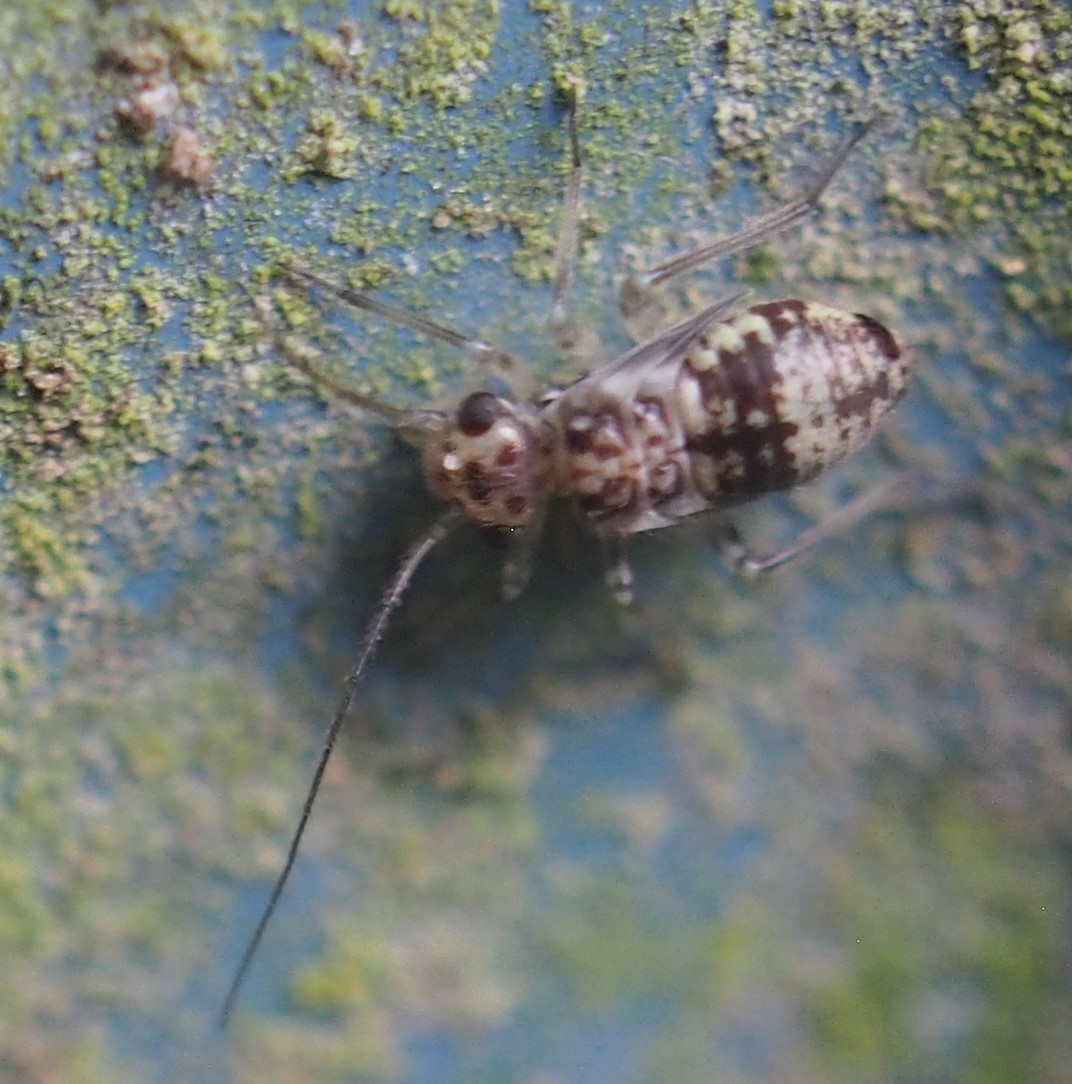
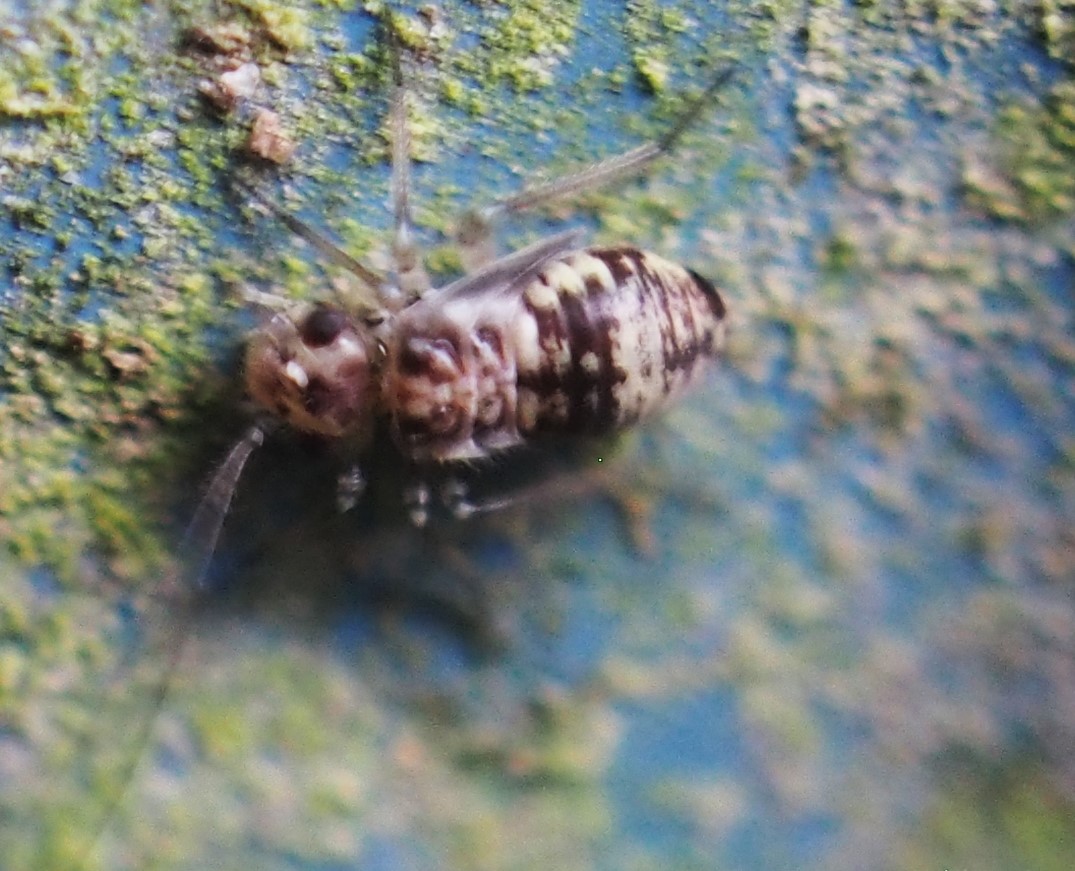
There aren't very many Valenzuela flavidus adults, but they are easy to spot. I'm guessing that the red eyes on this nymph indicates that it is a female V. flavidus.
.
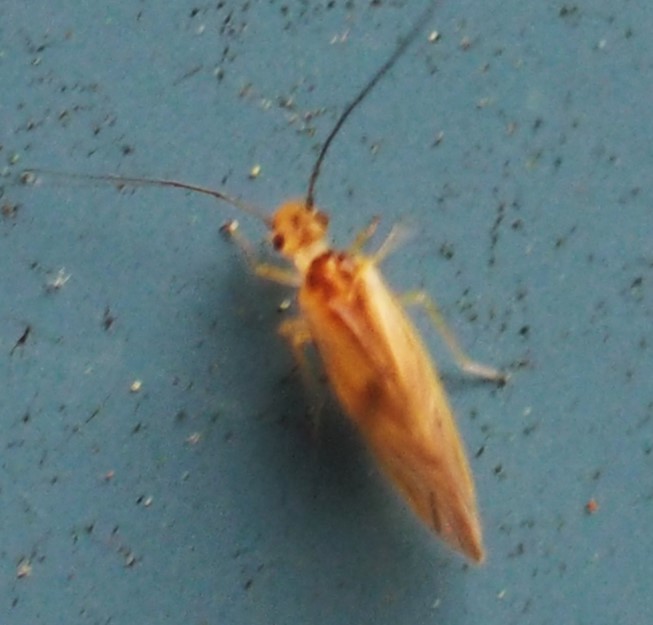
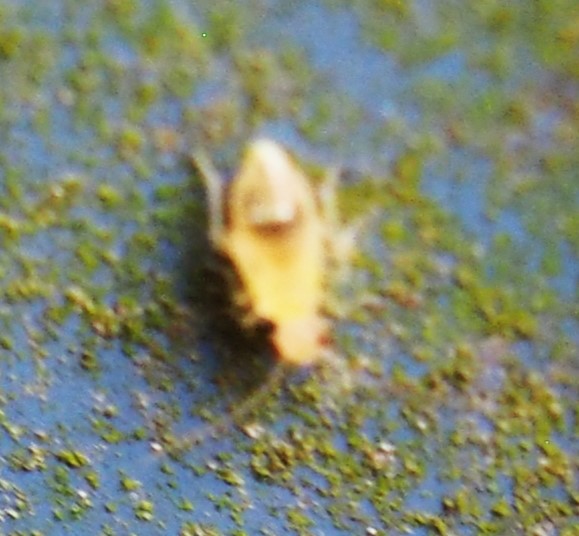
There are a few Barklice whose nymphs have sticky hairs on top that allow them to collect debris from the substrate to disguise them as piles of junk. On the North Wall, this fact allows the Trichadenotecnum genus Barklouse nymphs to masquerade as such junk piles. But there are a few things that allow you to see that this pile of debris is really a Barklouse nymph. See the antennae in picture #1? As of last week we were already able to make out a few Trichadenotecnum adults. Here's one from this week.

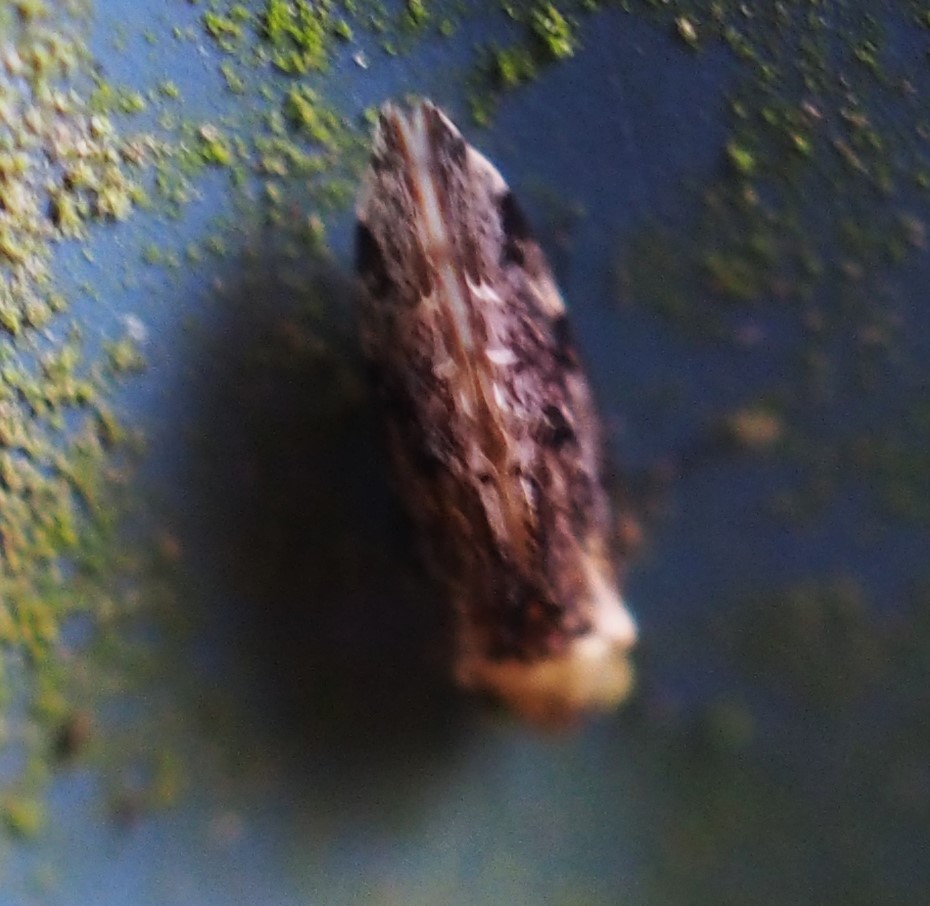
Here are a few creatures that just happen to come alphabetically before the Flies. A couple of weeks back, we saw a female Ebony Jewelwing Damselfly. It just so happens that the males are the ones with the brilliant blue bodies. Well, this week, one or two of those graced us with their colors.
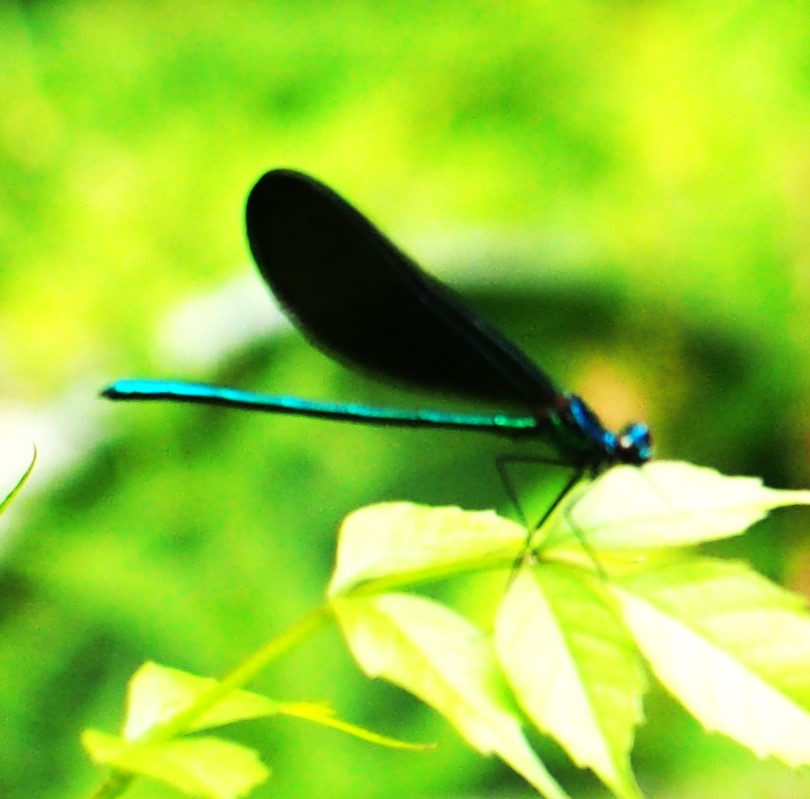
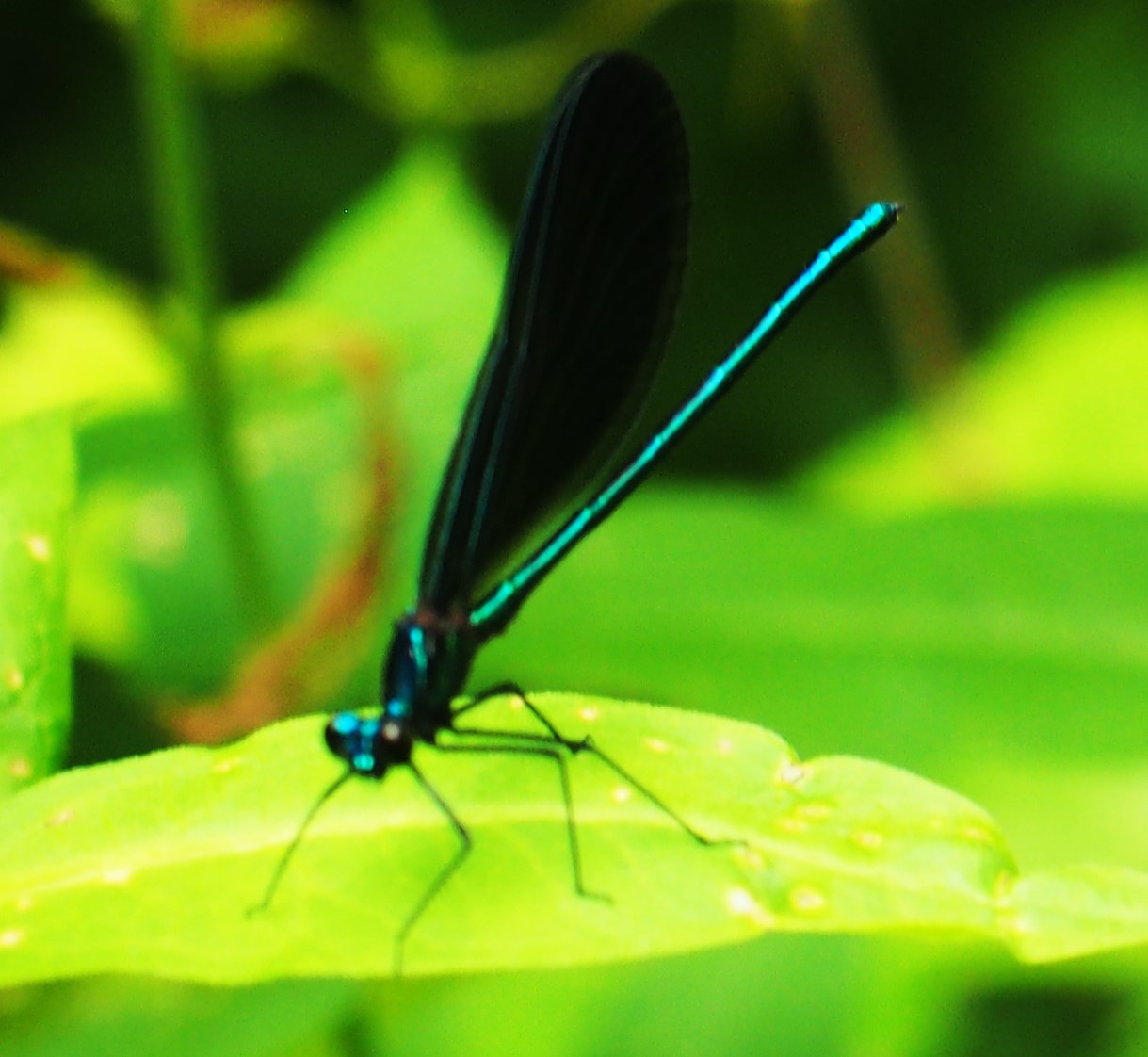
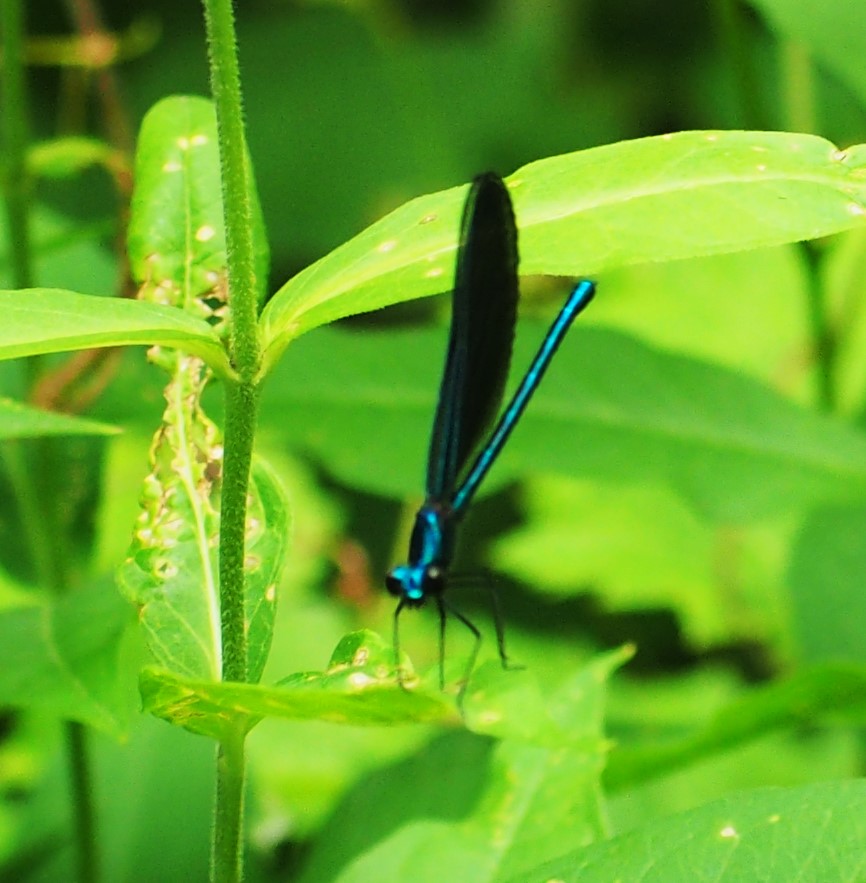
Last week a friend asked me to find someone who could identify these first two insects. Fairly quickly a member of iNat entered the answer: it's an Earwig. Now I hadn't seem an earwig in a long time and not one that looked like this one. But this very Today I looked in my bag of pictures I'd gotten just before the rain sent me back inside. This one looks more like the Earwigs I had been used to. Coincidence? Maybe this is just the season for Earwigs!
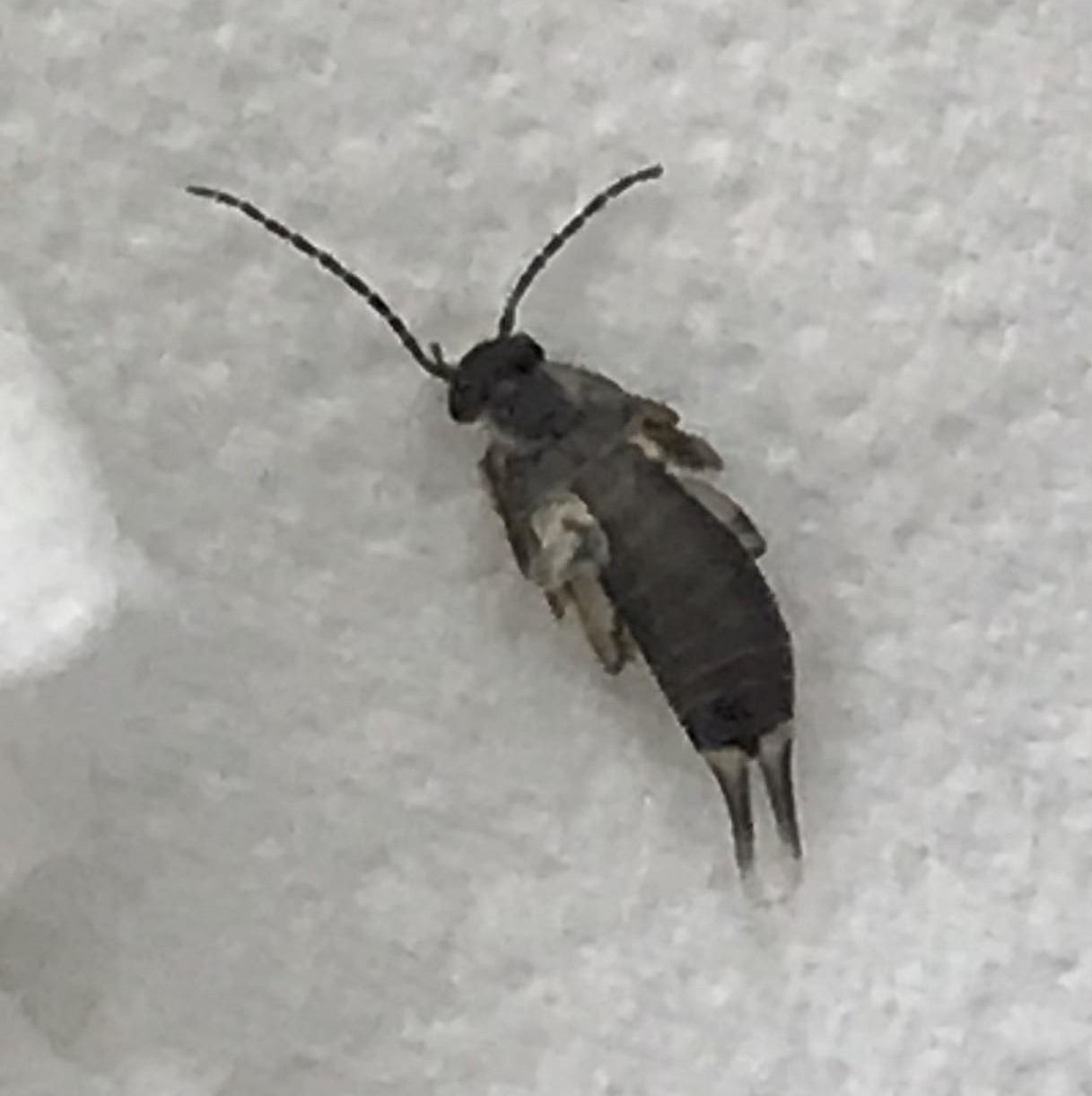
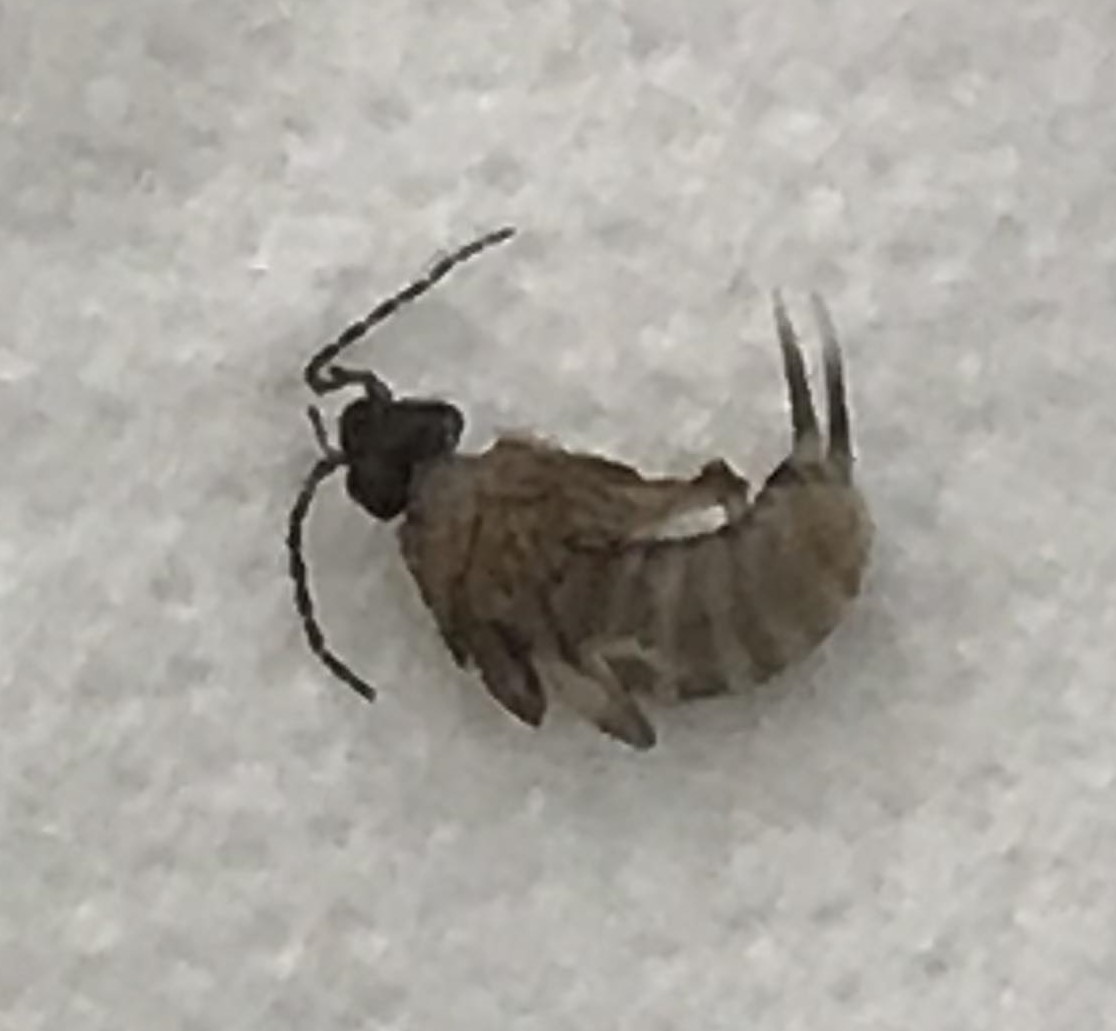
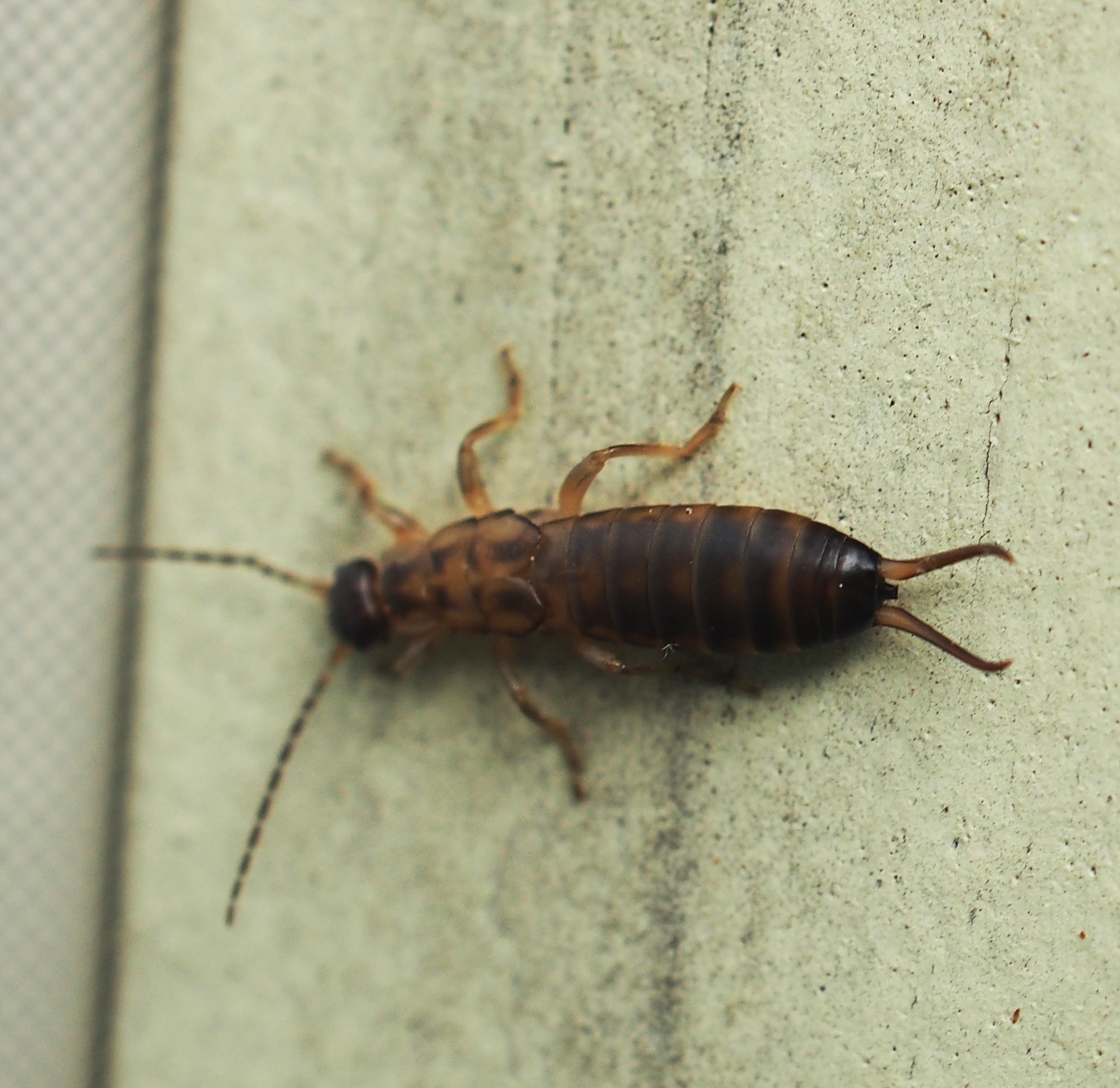
So let's go see what kinds of Flies found their ways into the yard. Here's a Crane Fly (first two pictures). And HERE's a Large Crane Fly. I was sure that with such a huge distinctive-looking Fly someone would come up with a fancy name for it. But that's okay. It is a VERY LARGE large Crane Fly.

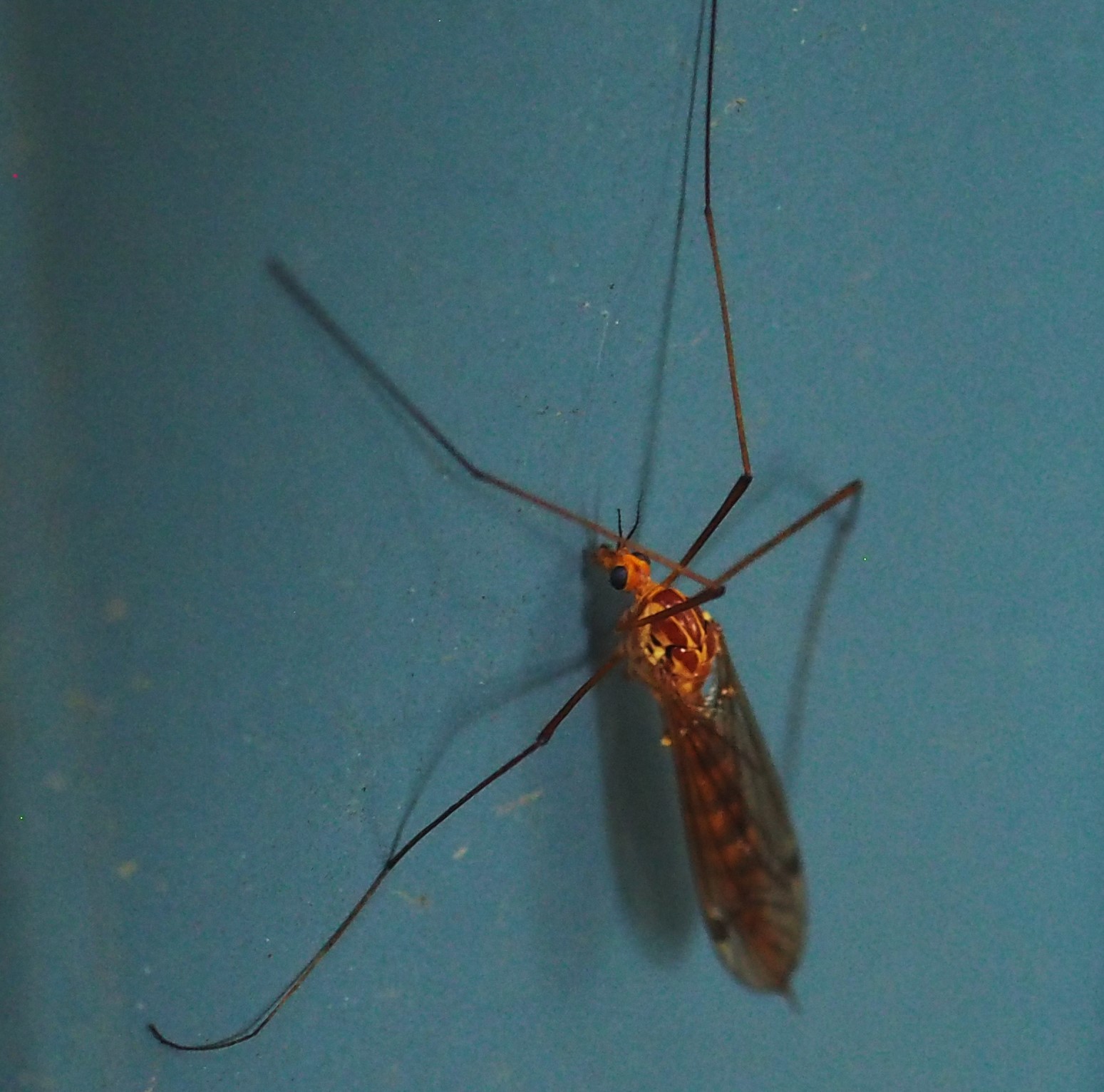
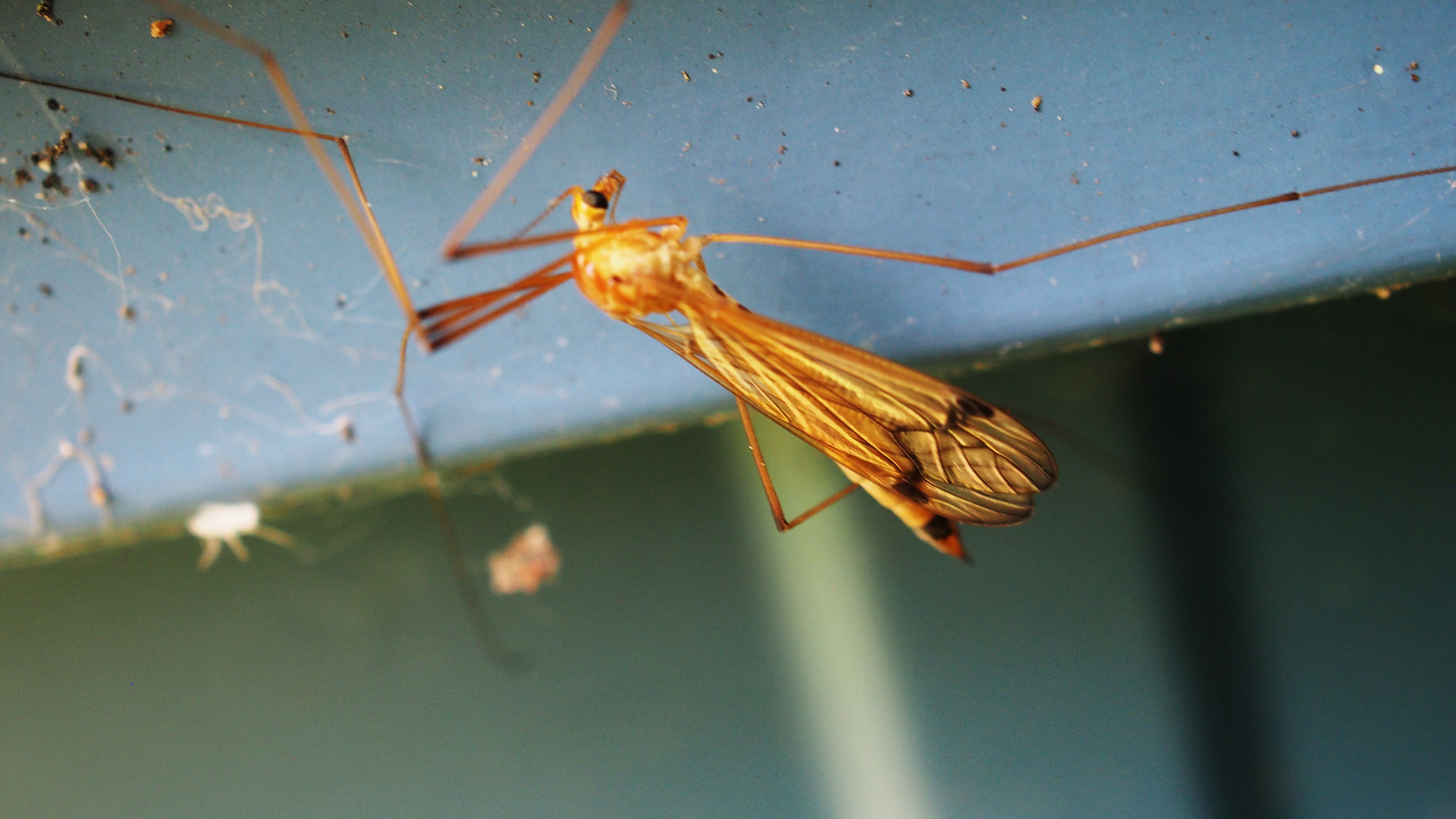
There are more Robber Flies these days than I have ever seen before. This one was identified by the ID app as Machimus notatus, like the one I saw last week. I guess, looking at them, they just COULD be the same species! Number 2 is the picture from last week. Number three is small and looks like the little striped leg Robber Fly. The fourth one is about the length of one of these Blackberries!
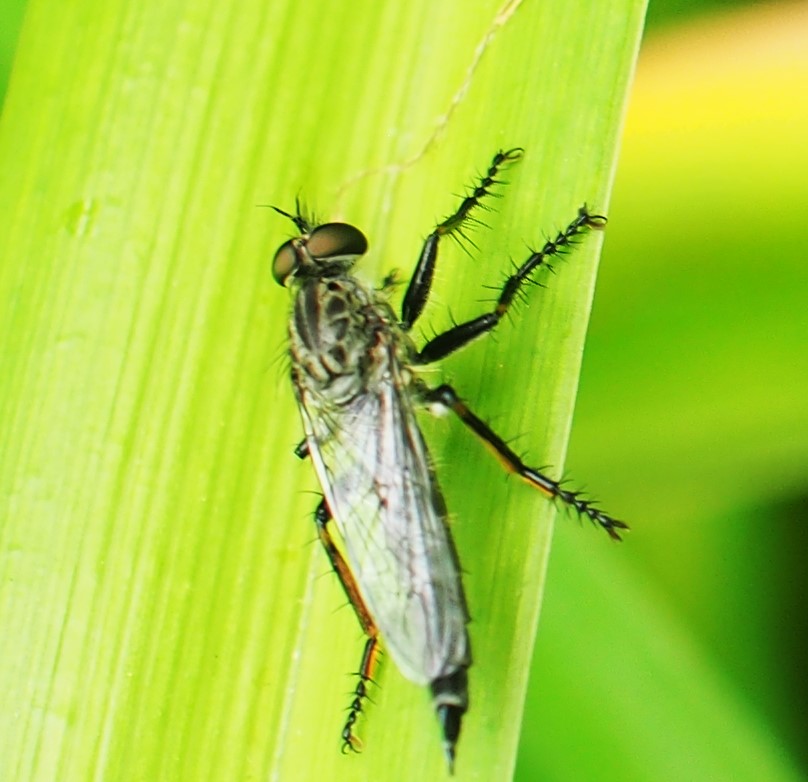
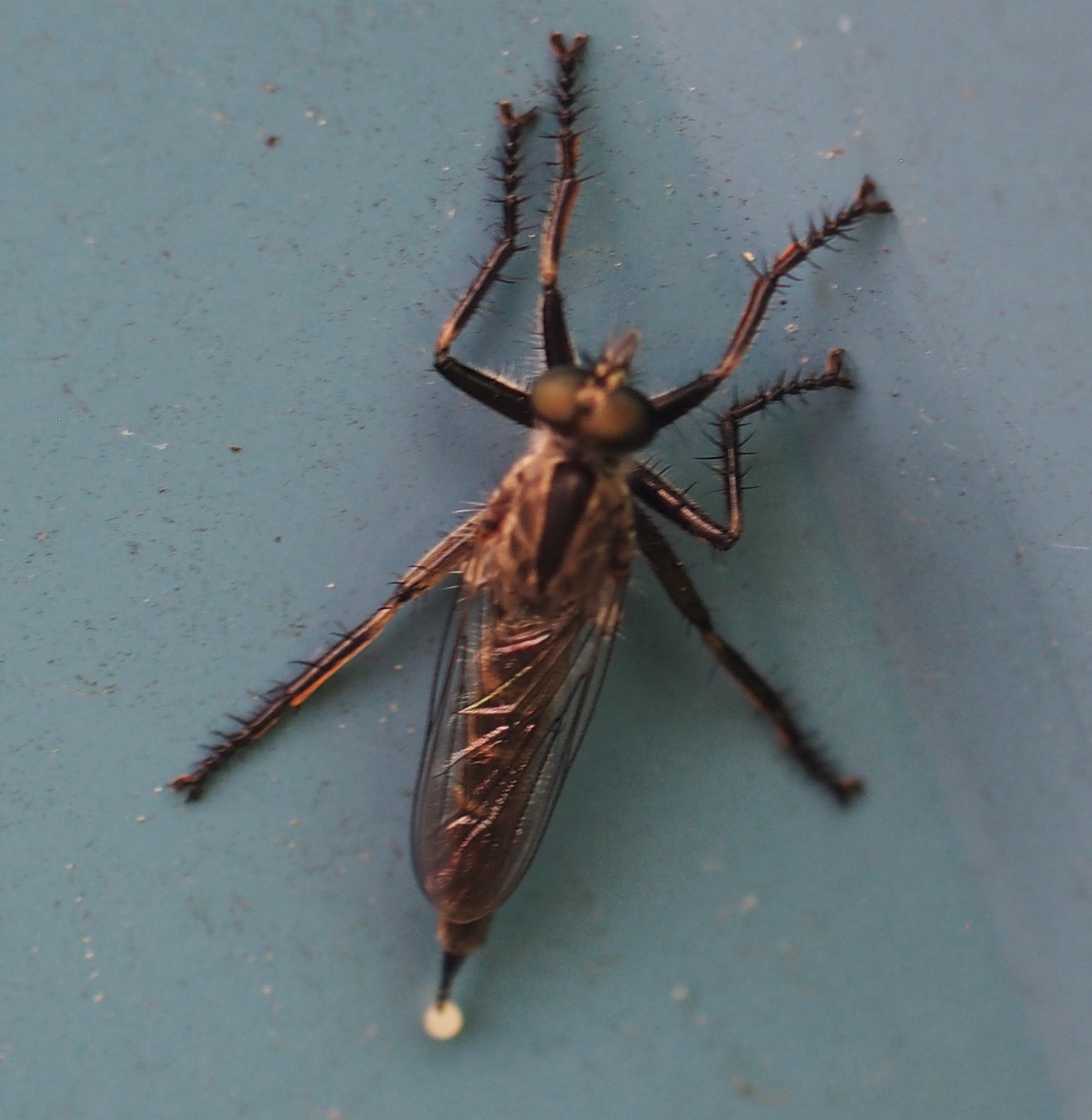
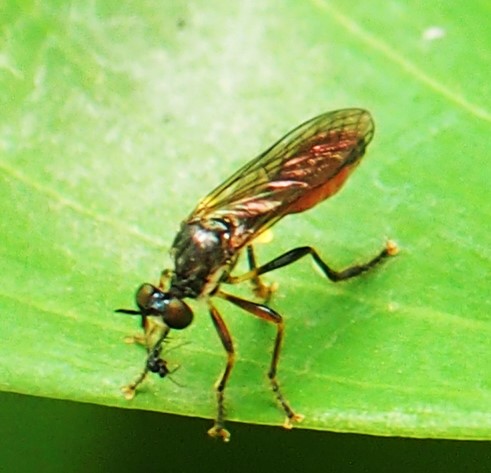
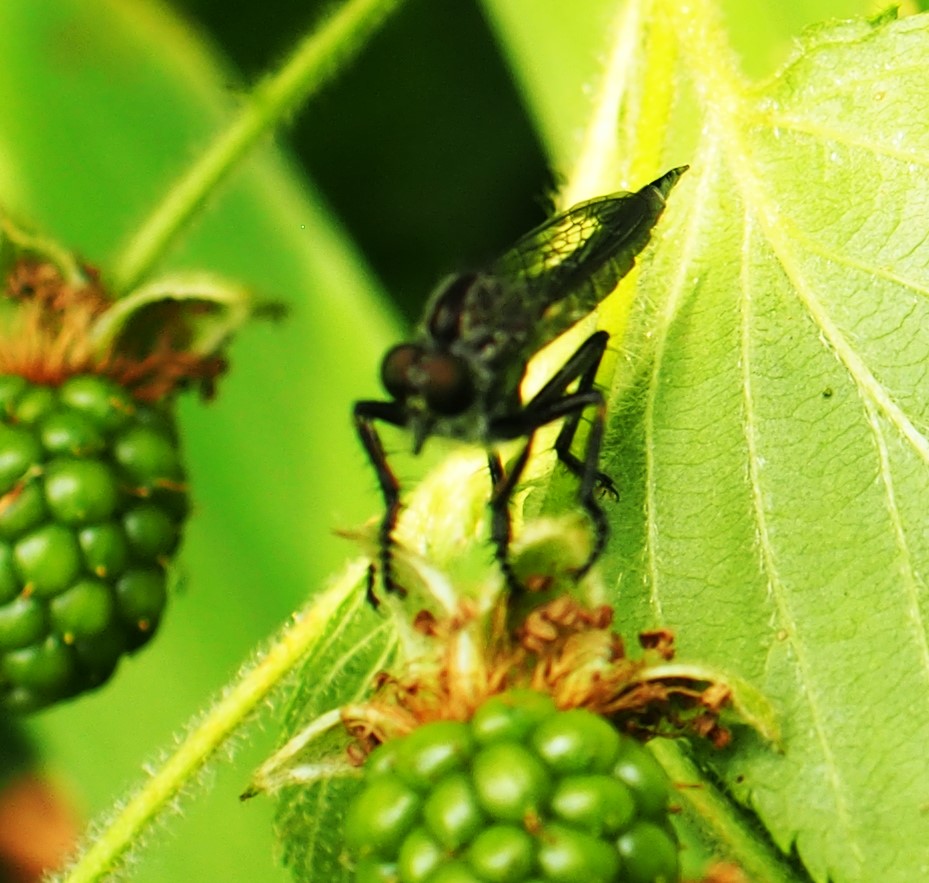
This little Fly is probably in genus Homoneura in the Lauxaniid Flies. I don't know about numbers 2 or 3.
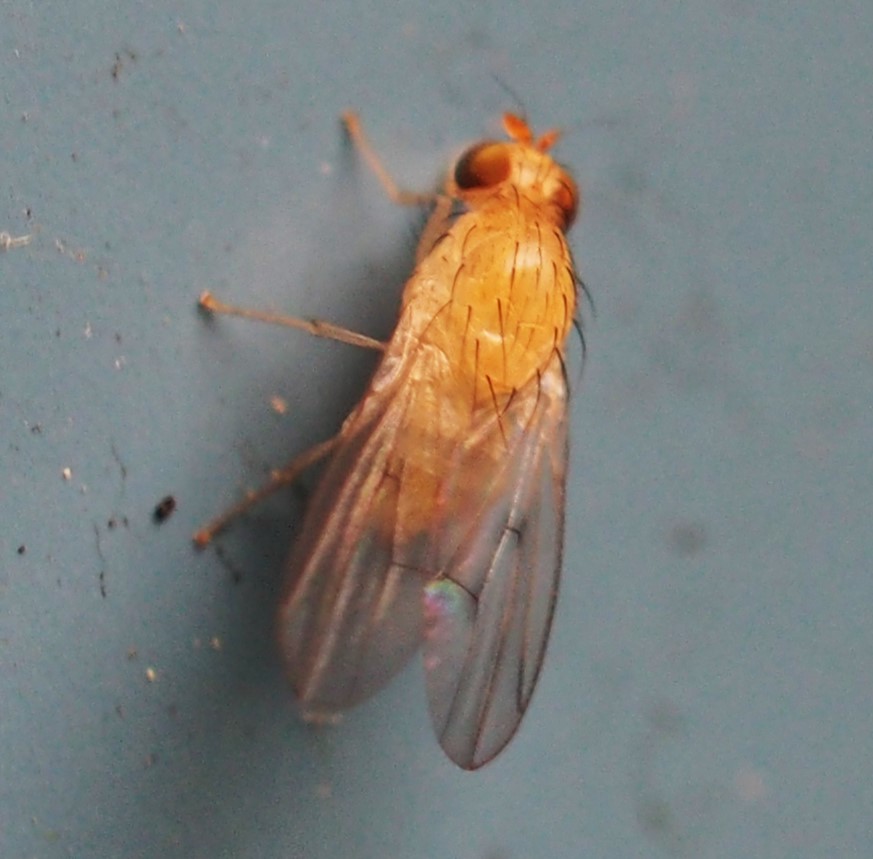
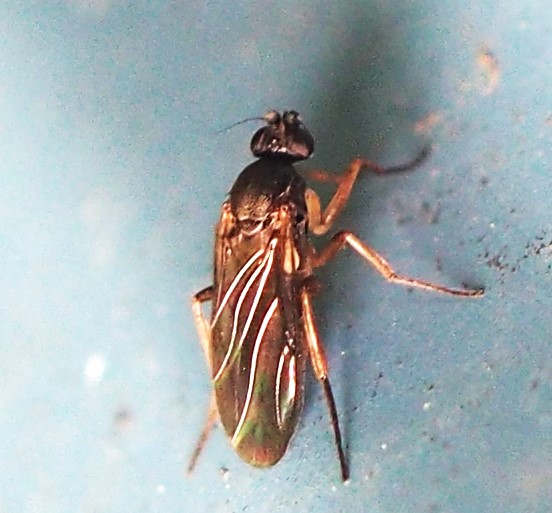

Here's one of those Moth Flies. This one doesn't have so many white dots as the usual Bathroom Moth Fly, but it could be one of those. The second looks like one of those Root-Maggot Flies. Number 3 is at least one of the big Fly-like Flies!

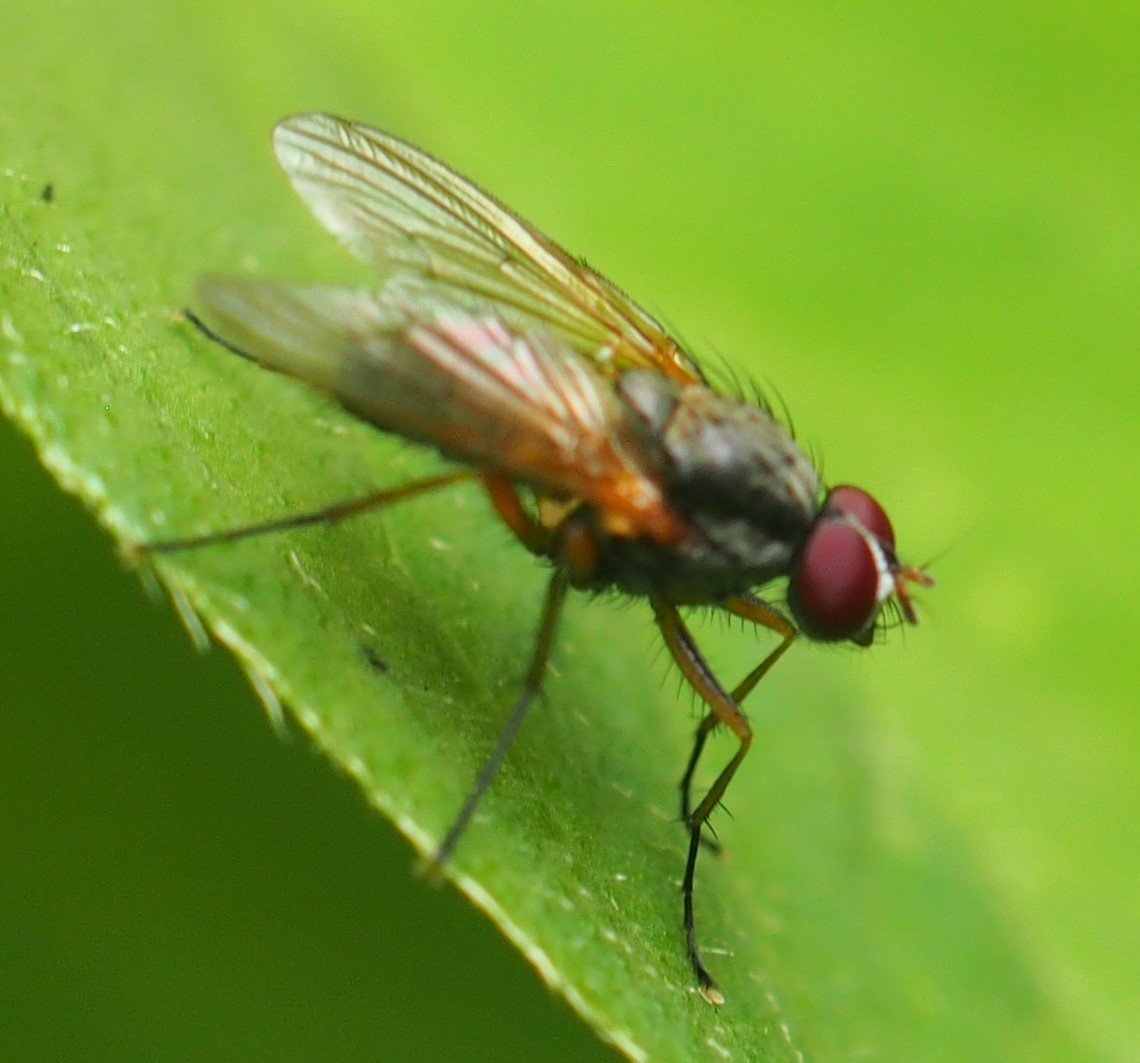
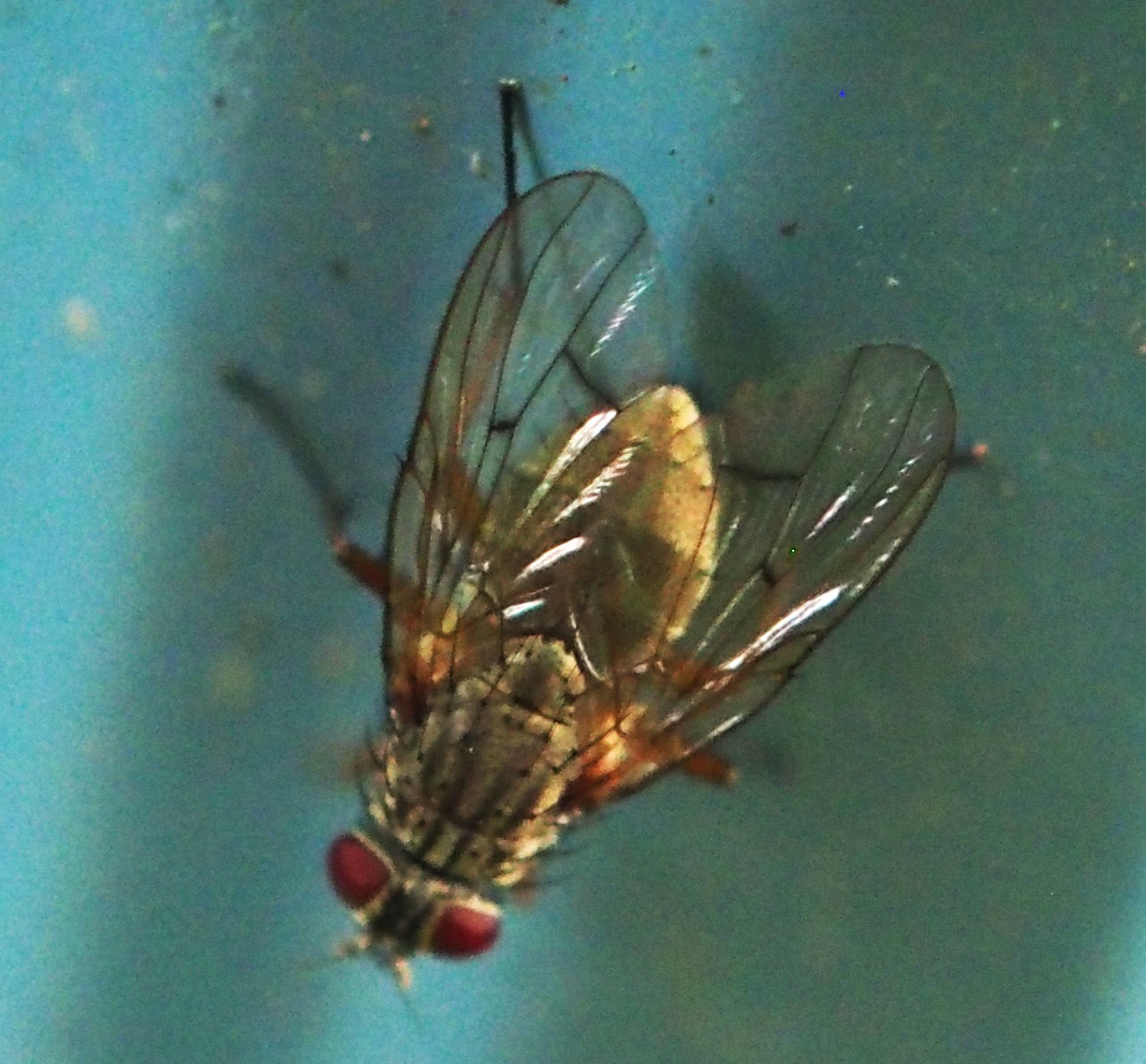
Down to the Moths. First is a Morbid Owlet. Then come the Single-dotted Wave and the Large Lace-border Moth. Last is the Norway Maple Pigmy Moth.
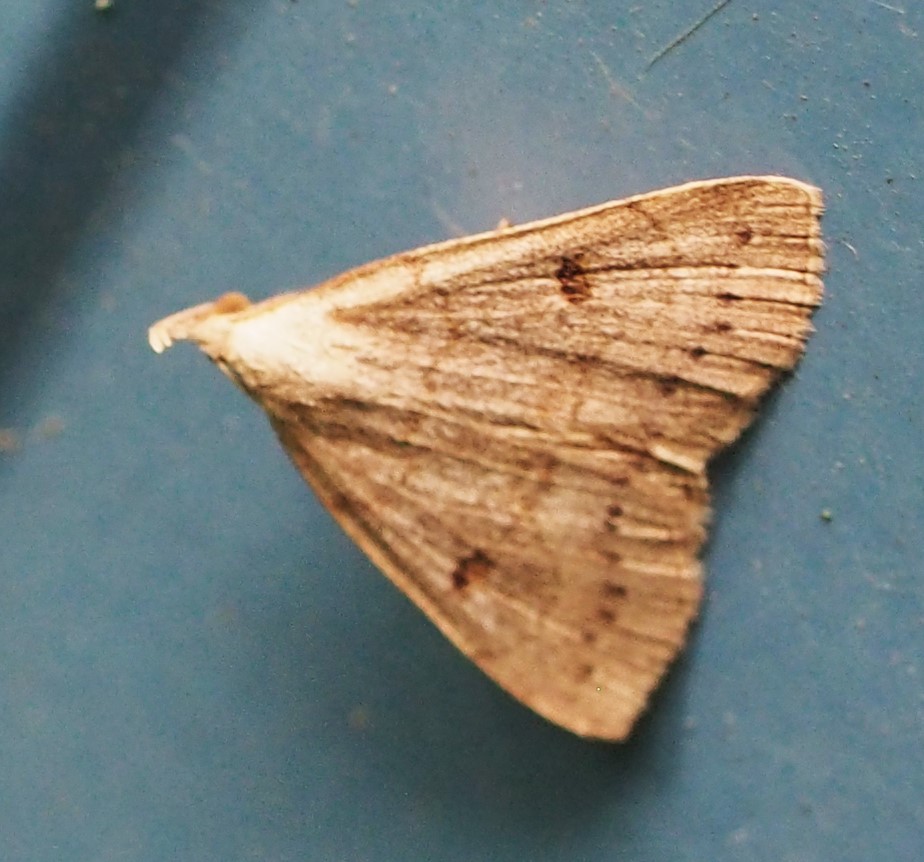

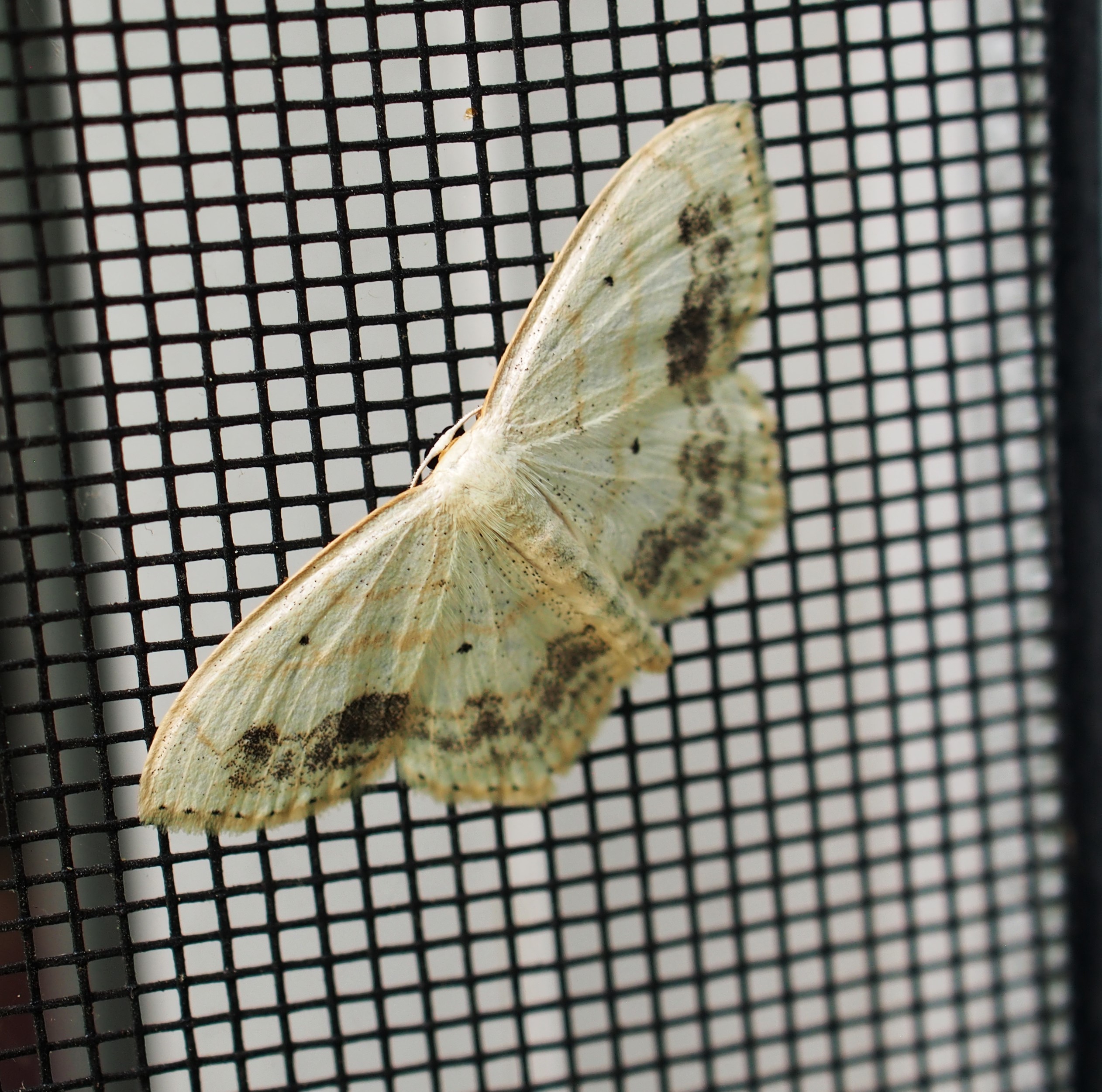
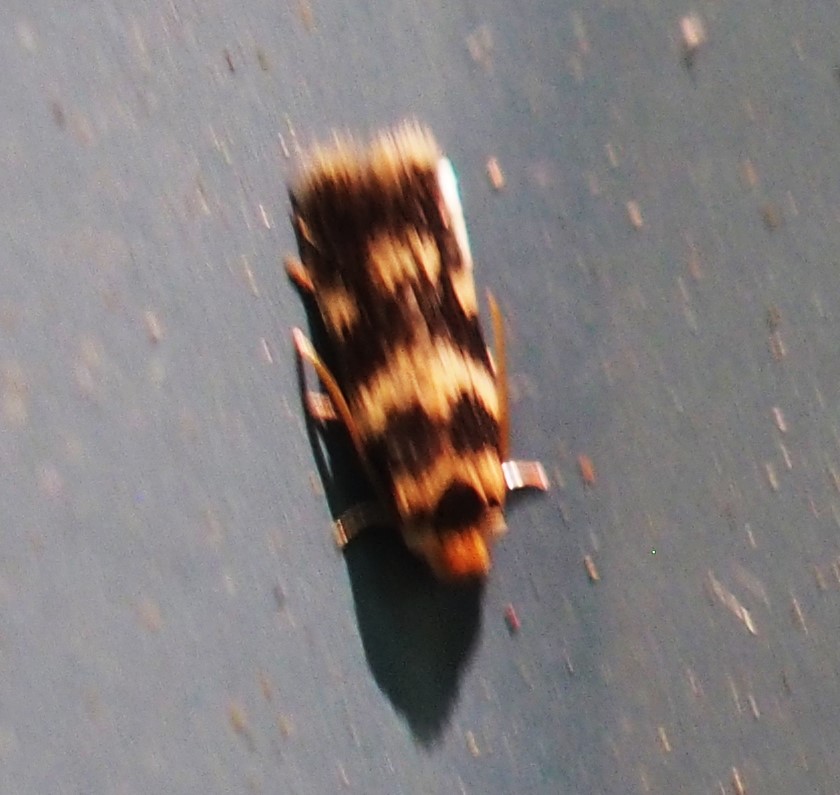
So it must be time for a Flower Walk. I didn't get to see many flowers this week but let's see who gives. Here are the Blackberries getting bigger. Thanks to the recent rain, the raspberries got big and juicy. I picked over a half-cup today. If I save them in the freezer and later get a few more, maybe I'll have enough for a single serving of pie.
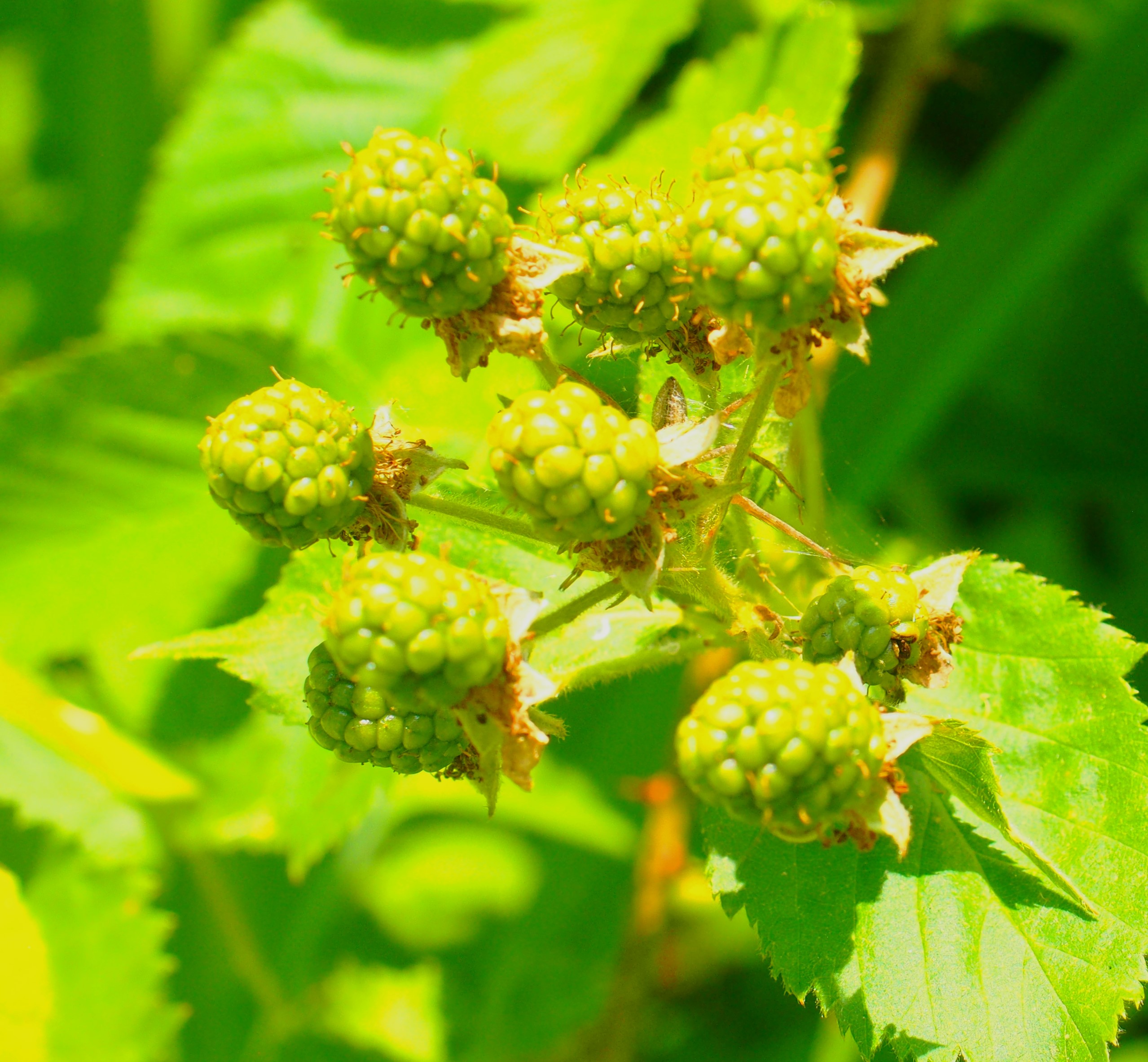

The Spiderworts were worth putting in twenty-five years ago! Here are those orange Day Lilies that sprang up all over town at the same time!

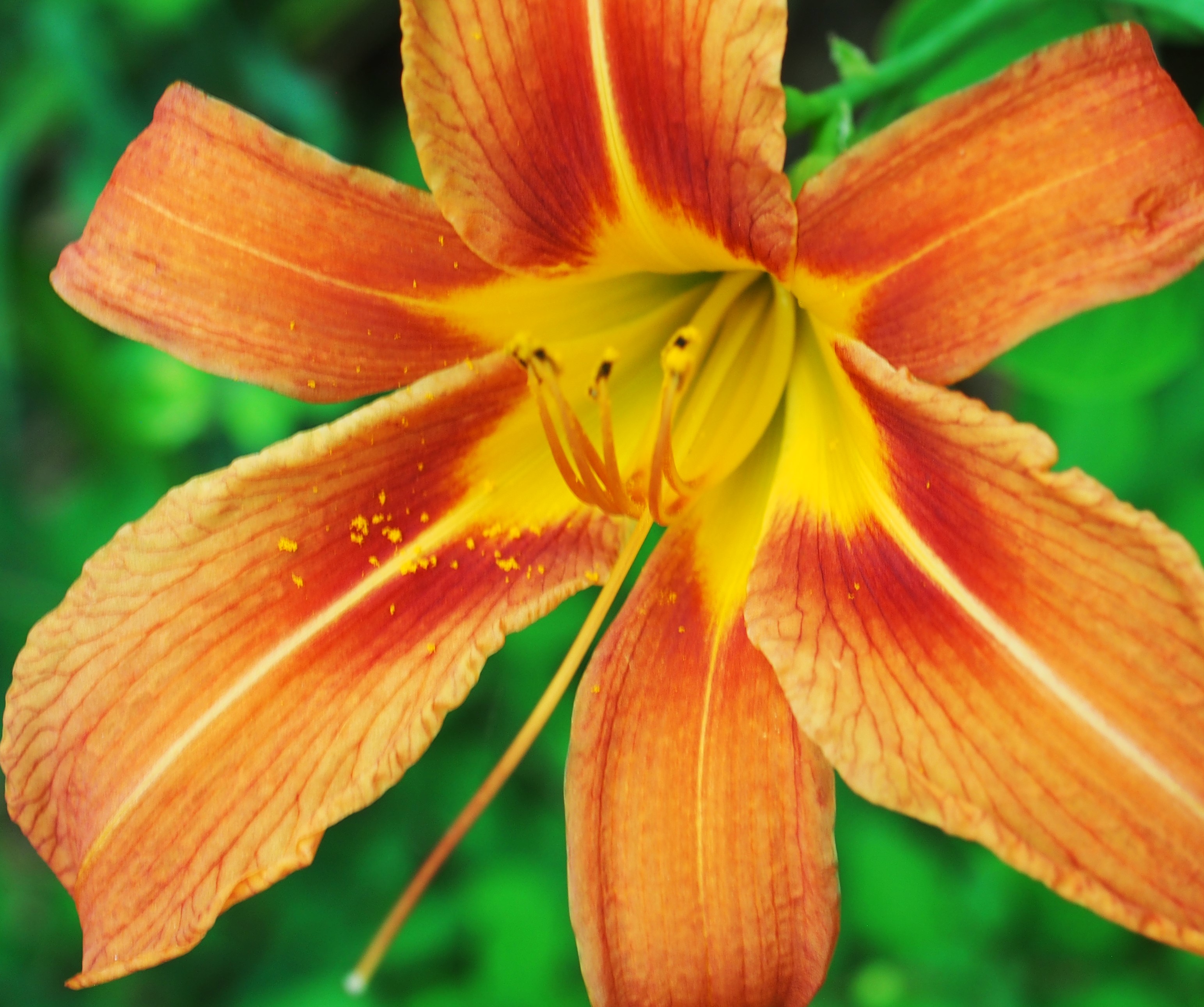
These pretty Poppies are just about finished. I do think I see a couple of buds down deep in that foliage though. The Redbud Bruchids must like these flowers as much as they love the seeds inside the Redbud pods. Do you remember that the Redbud is not a tree, but a Leguminous plant?
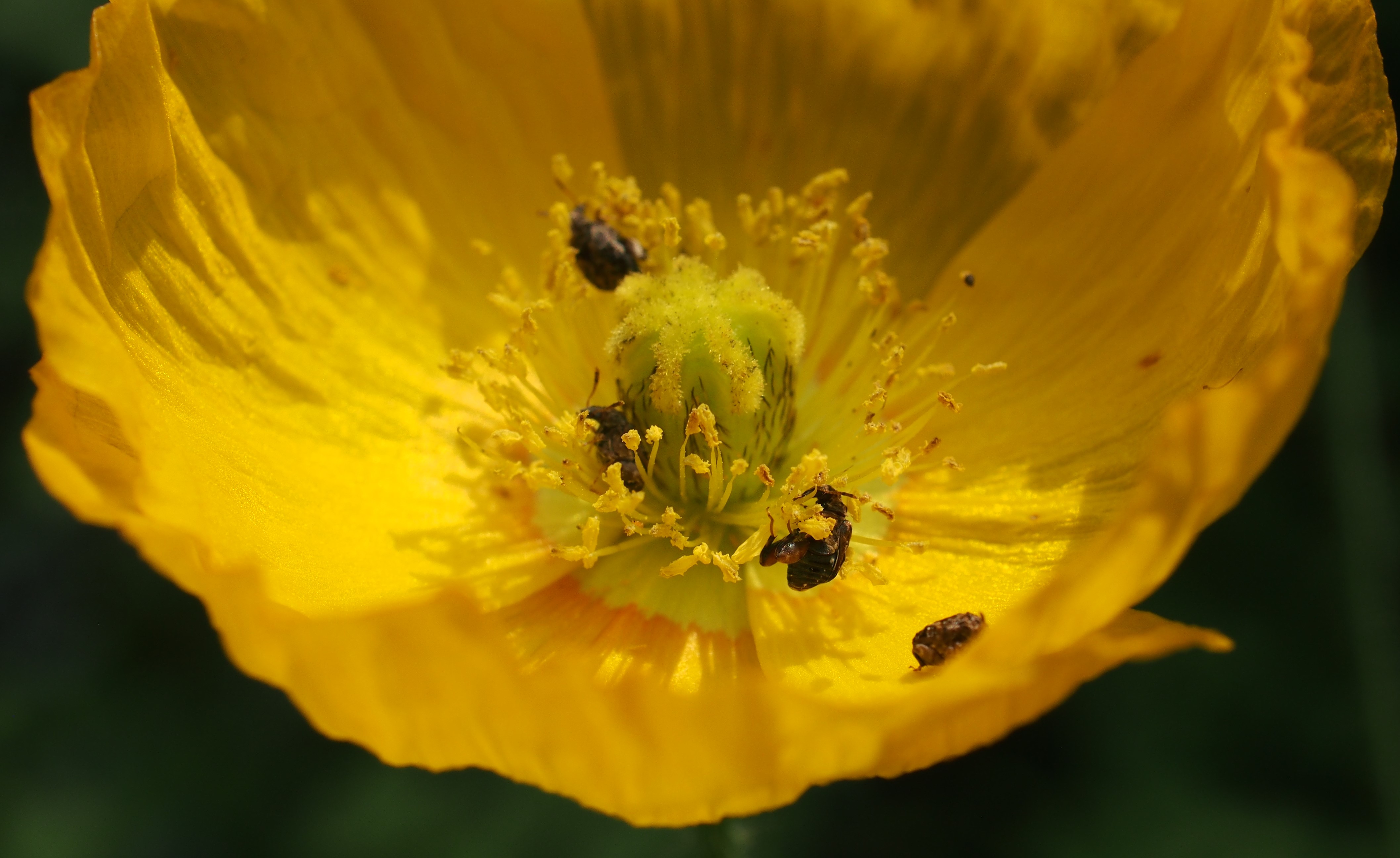
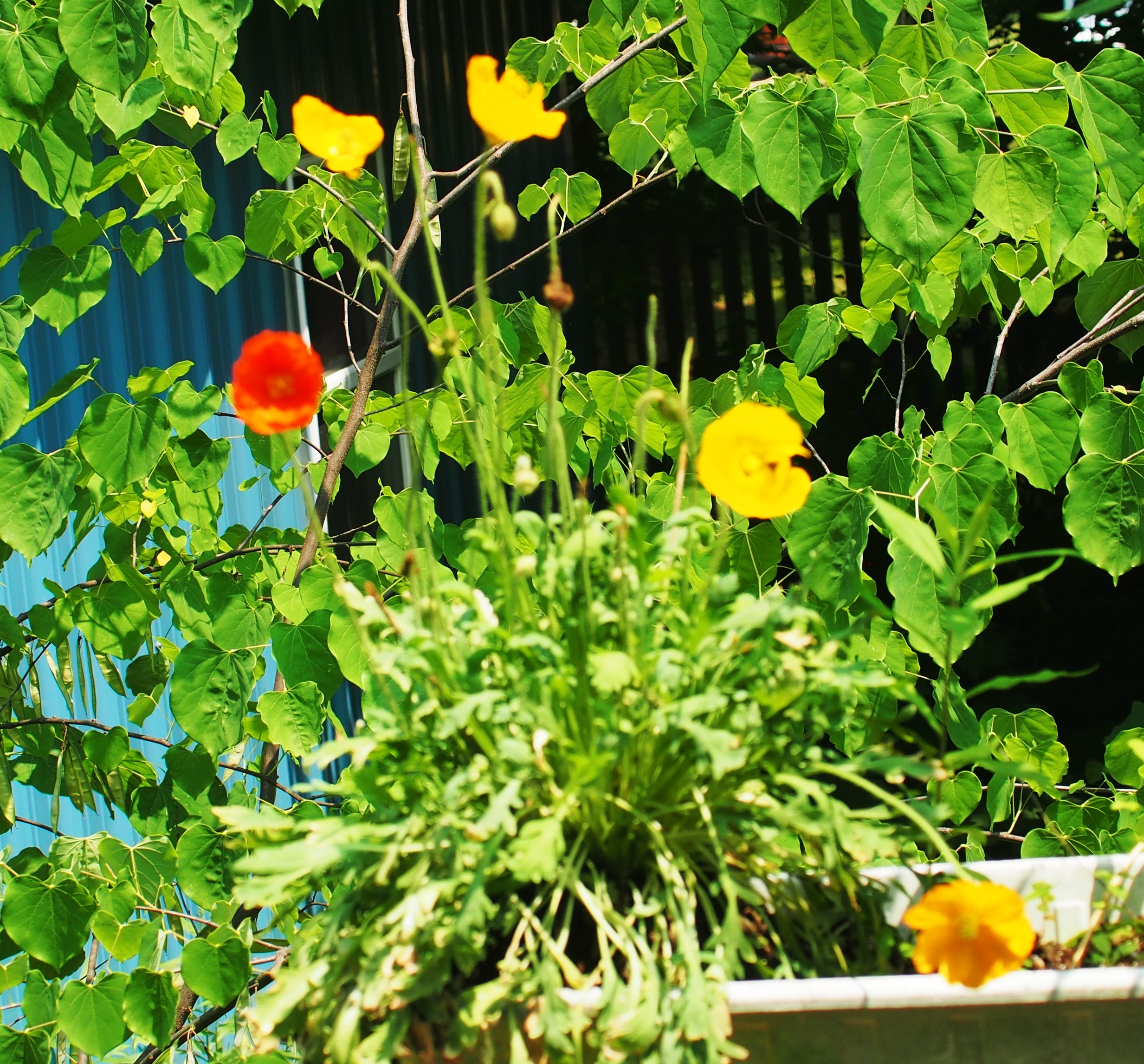
The fishes love the Lilies, or maybe they see me admiring the Lilies and think I am admiring them and have a can of Fish Flakes in my hand. This was the last day of bloom for this Lily, which was one of a pair that bloomed at overlapping times for a number of days.


A wonderful treat for the eyes! I don't know if that Deptford Pink is as Deptford as it is PINK!
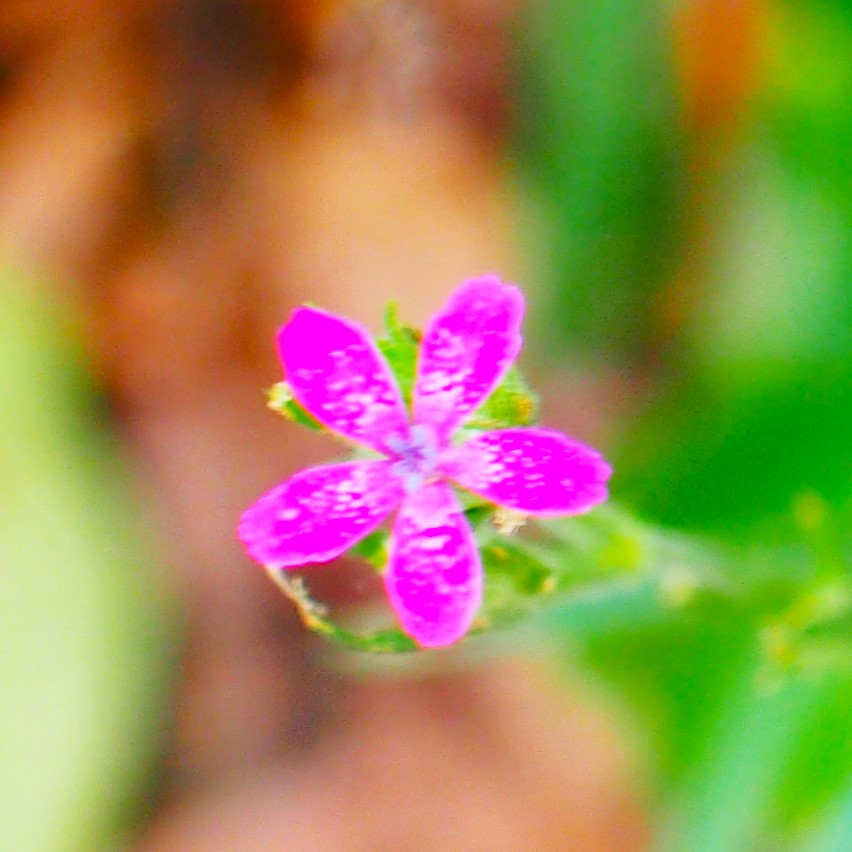
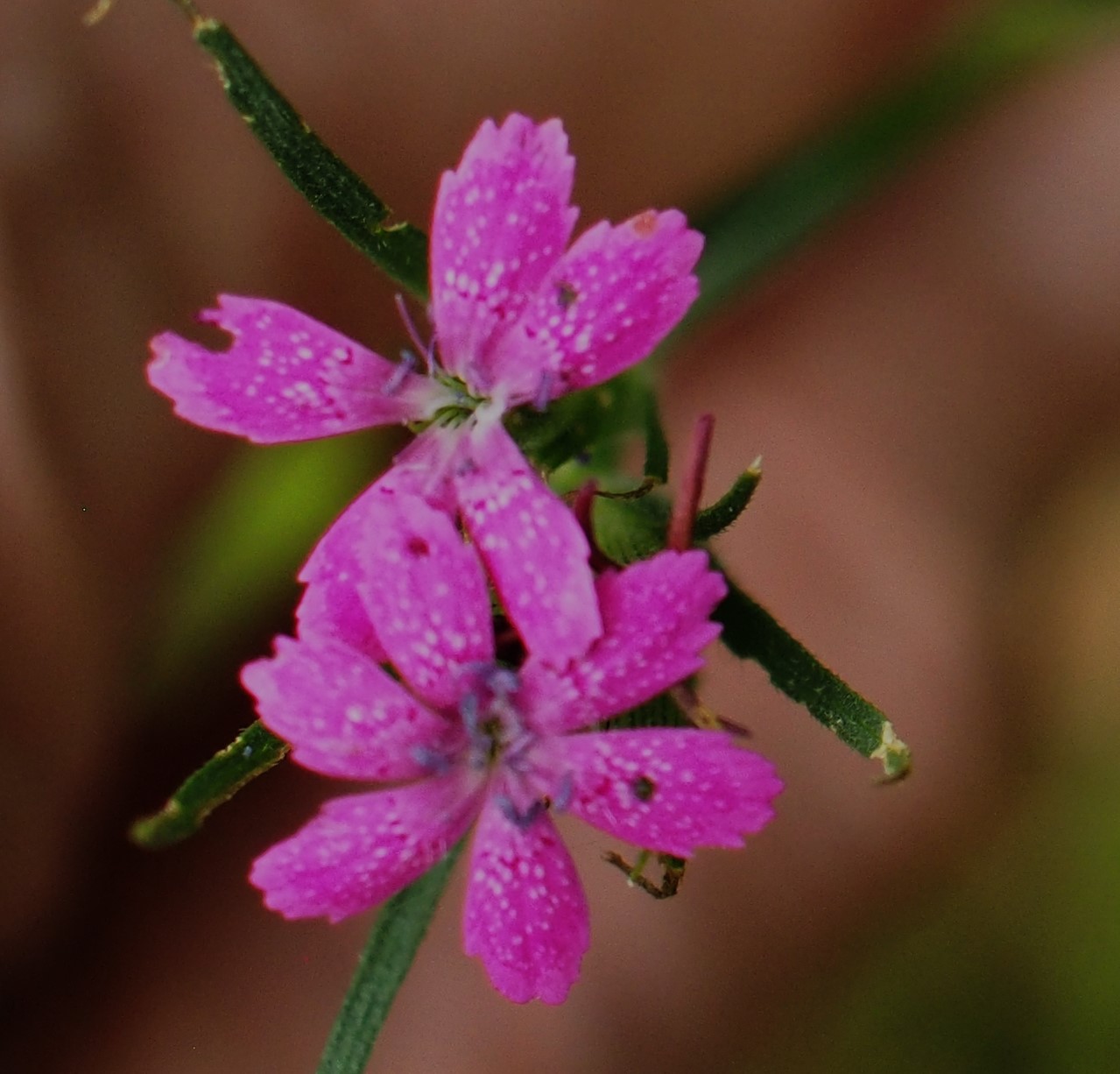
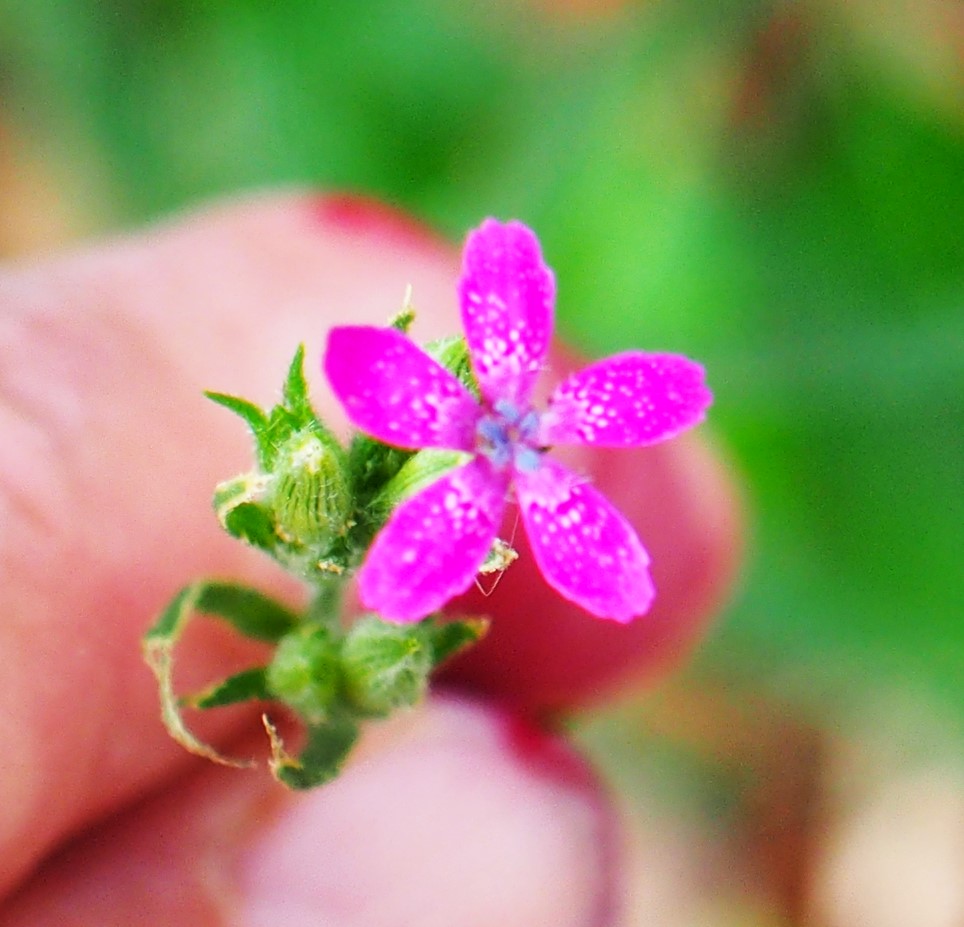
I've got no clue what this beautiful red liquid is that is pooling at the end of a leaf. I will try to find out for you if you would like to grow some.
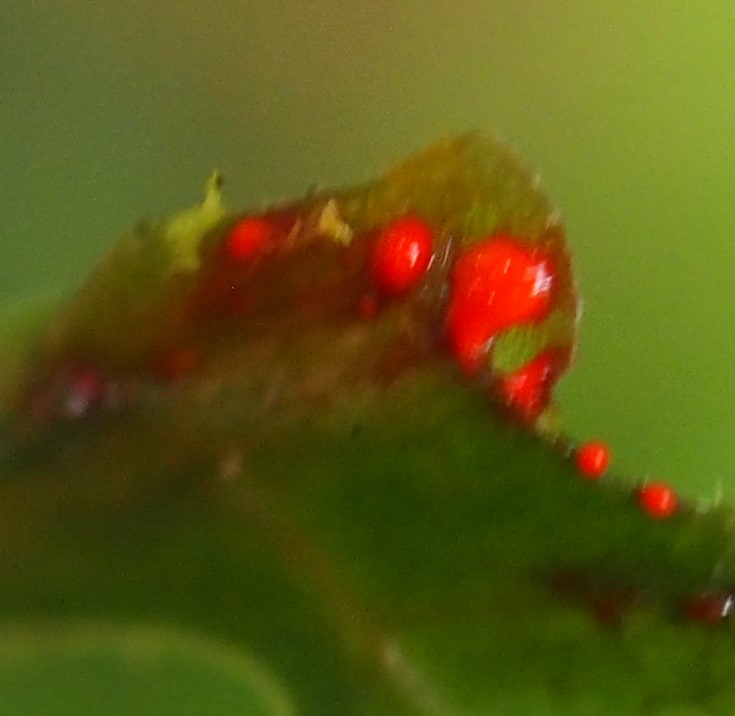

Well, that was some kind of Flower Walk. But now for the Piece of Resistance, as we go hunting to see what kind of Spiders are out there these days. It has been VERY hot lately and so these creatures are trying to cool off near the ground. The Common House Spiders seem to be very healthy (and to my mind, they are also one of the most attractive Spiders around here). What I haven't seen yet is the males as they grow redder and much more slender than these females.


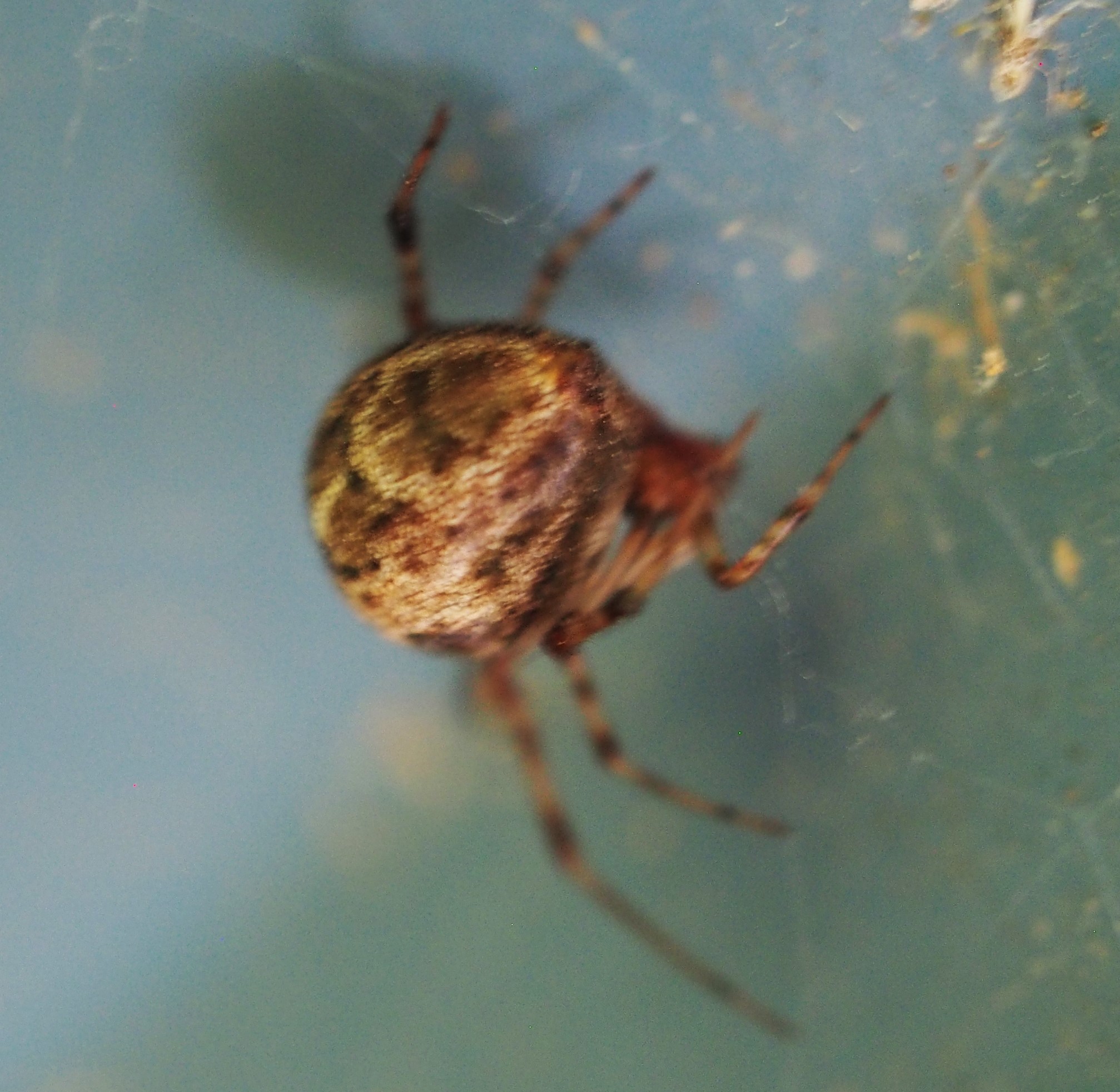
Here is a kind of Cobweb Spider that is prevalent these days. To me, it seems to have fangs!
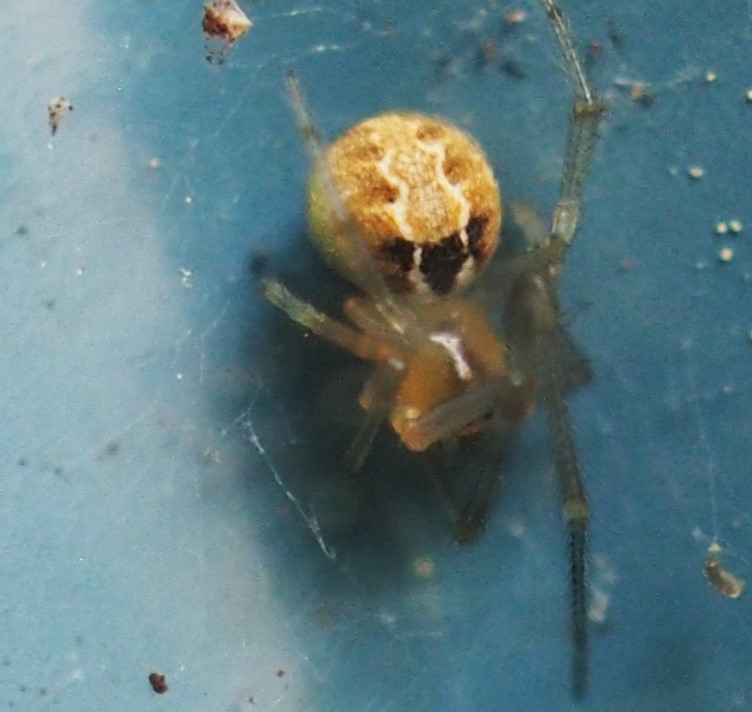
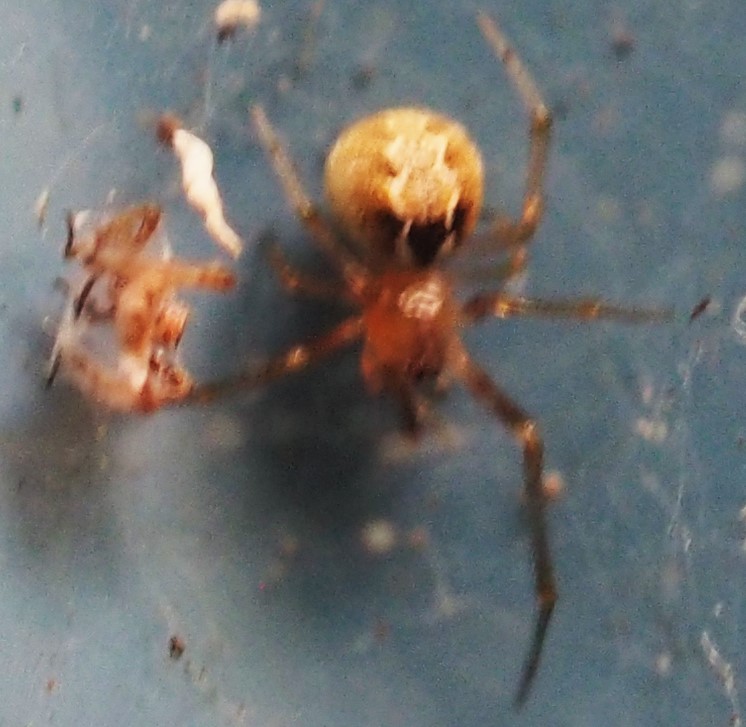
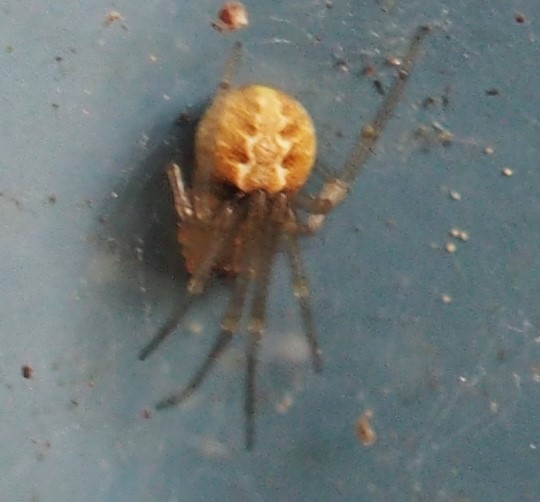
This is a very versatile Spider. That is, it shows itself both as a nice black and white Spider, and at other times all you see is a pile of Spider eggs. This third Spider may be my old favorite, the Common Pirate Spider (Mimetus puritanus).
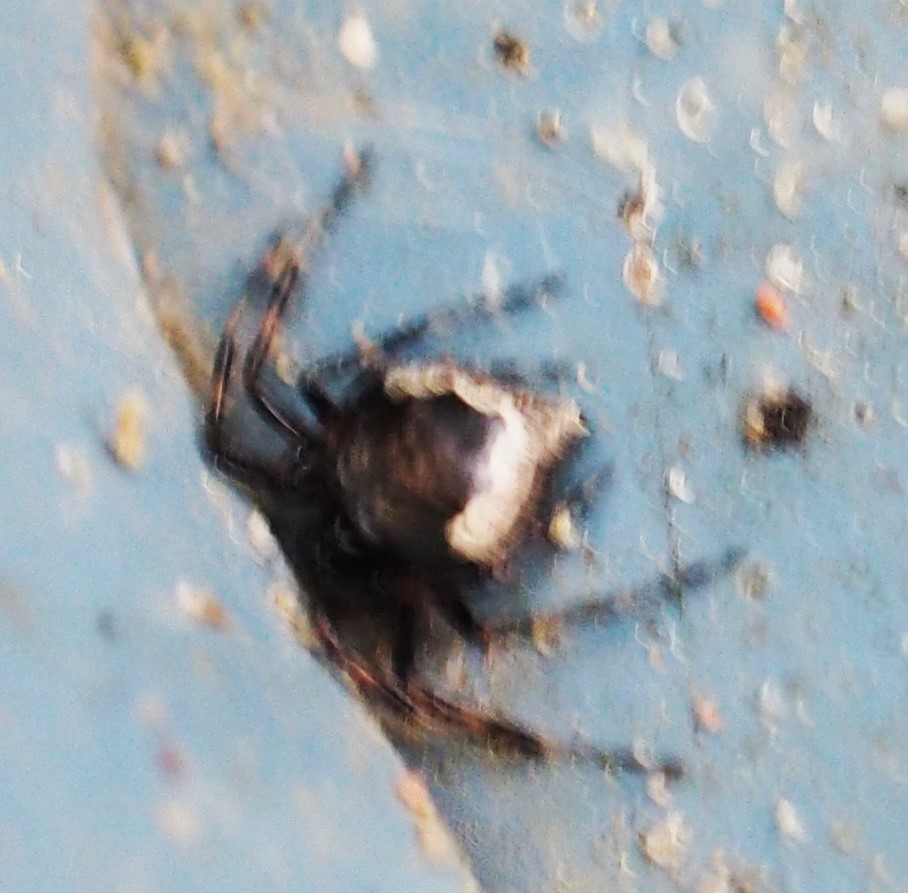
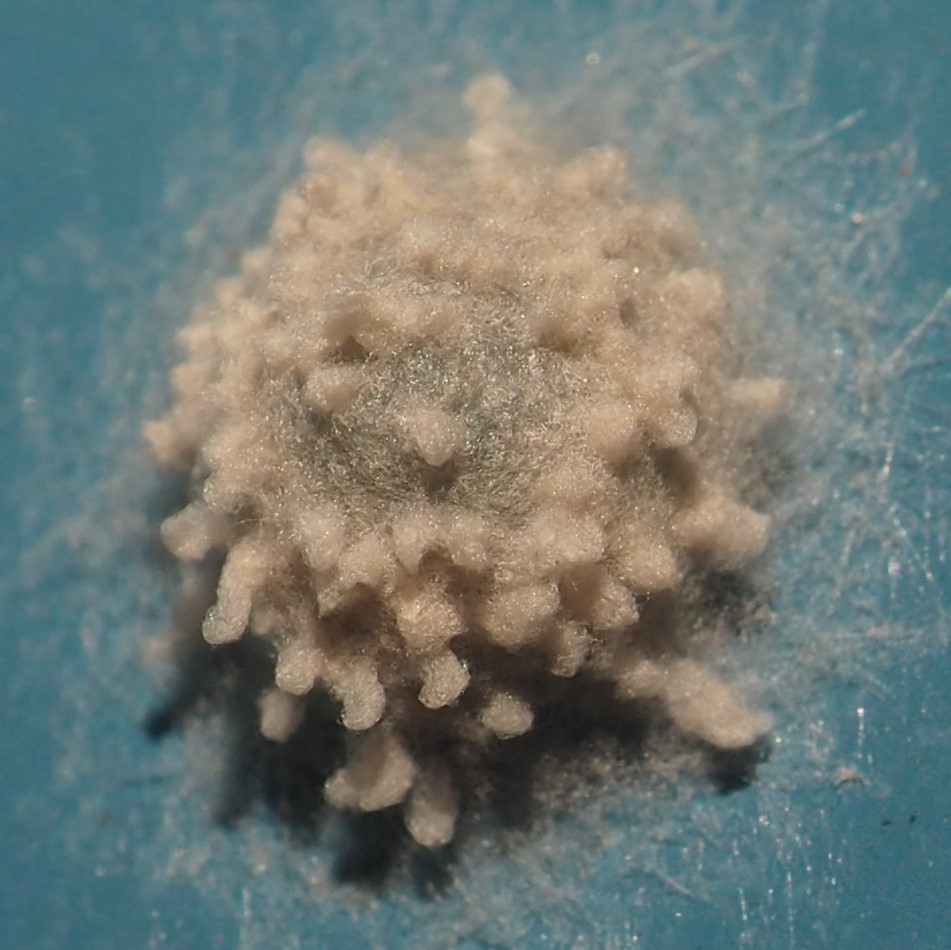
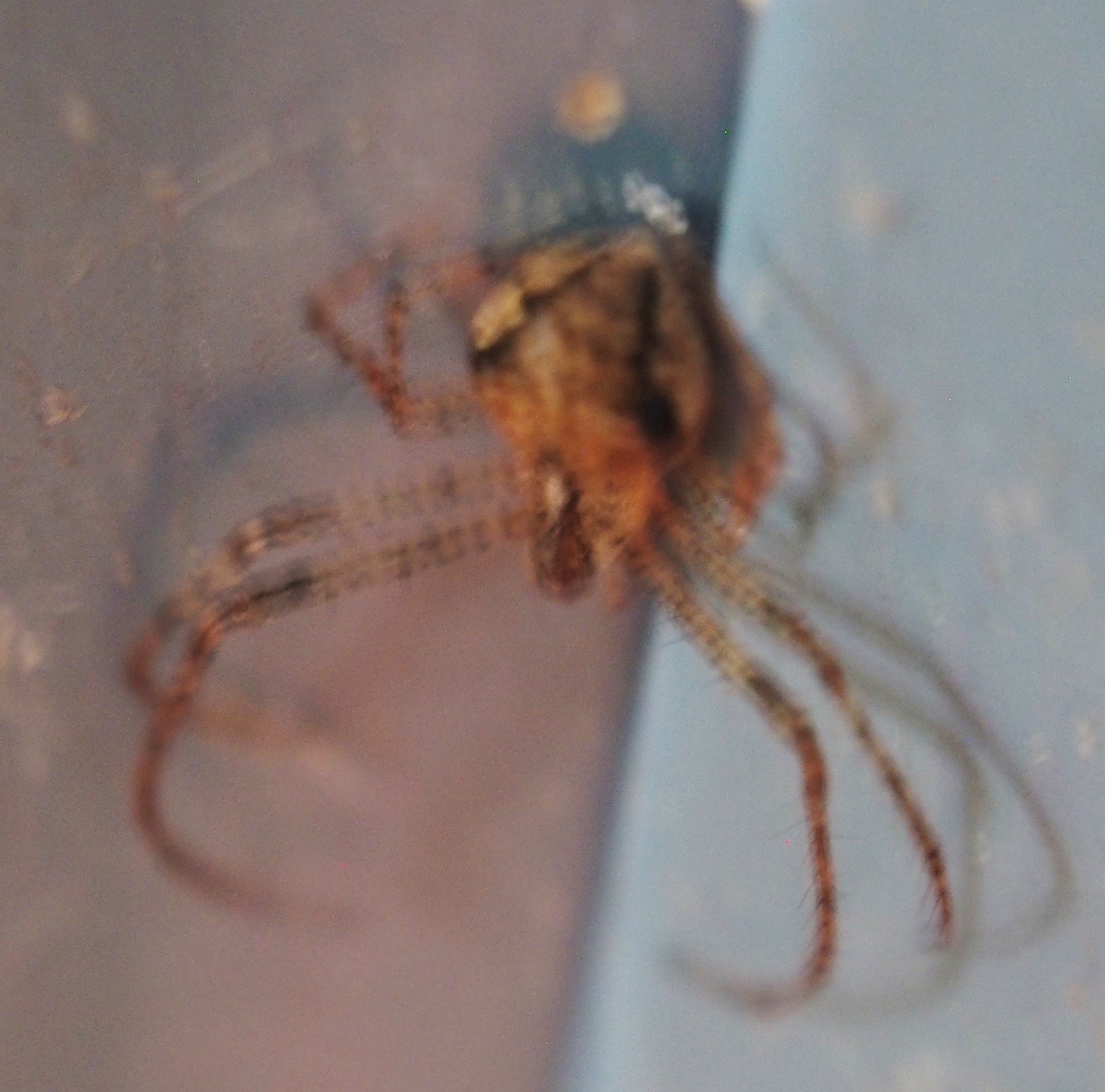
Let's see how the Frogs and Toads are doing. Mr. Toad finally wooed Ms. Toad and they mated for hours under the watchful eye of one of the Frogs. Yesterday they produced a long strand of eggs.
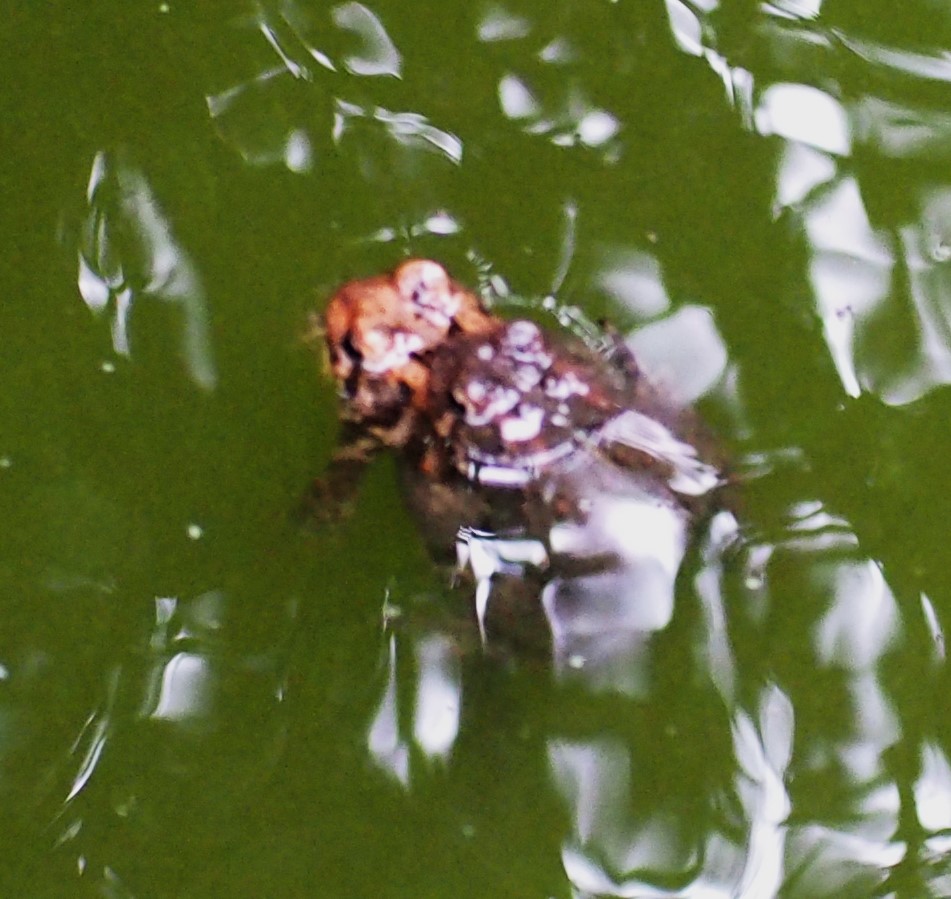
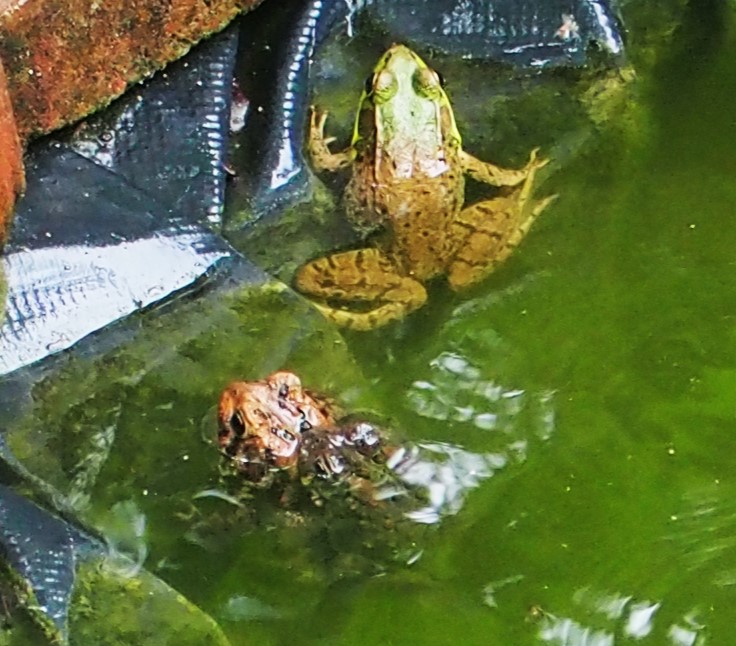

Here are the Toad Eggs late yesterday afternoon. Unfortunately, the Raccoon seems to have been highly attracted to this phenomenon, and this morning I found the pond a wreck. No Lily buds, shredded Lily leaves. I tried to clean up this state of affairs before taking any pictures. I am now sorely tempted to acquire a trap and hire someone to help me move as many raccoons as necessary to the country. But meanwhile, the Toads managed to spawn hundreds, maybe thousands, of tadpoles who are now having a grand old time swimming all over the Pond. They have already grown from minuscule to about half a centimeter long! Picture 2 shows them on the 25th.

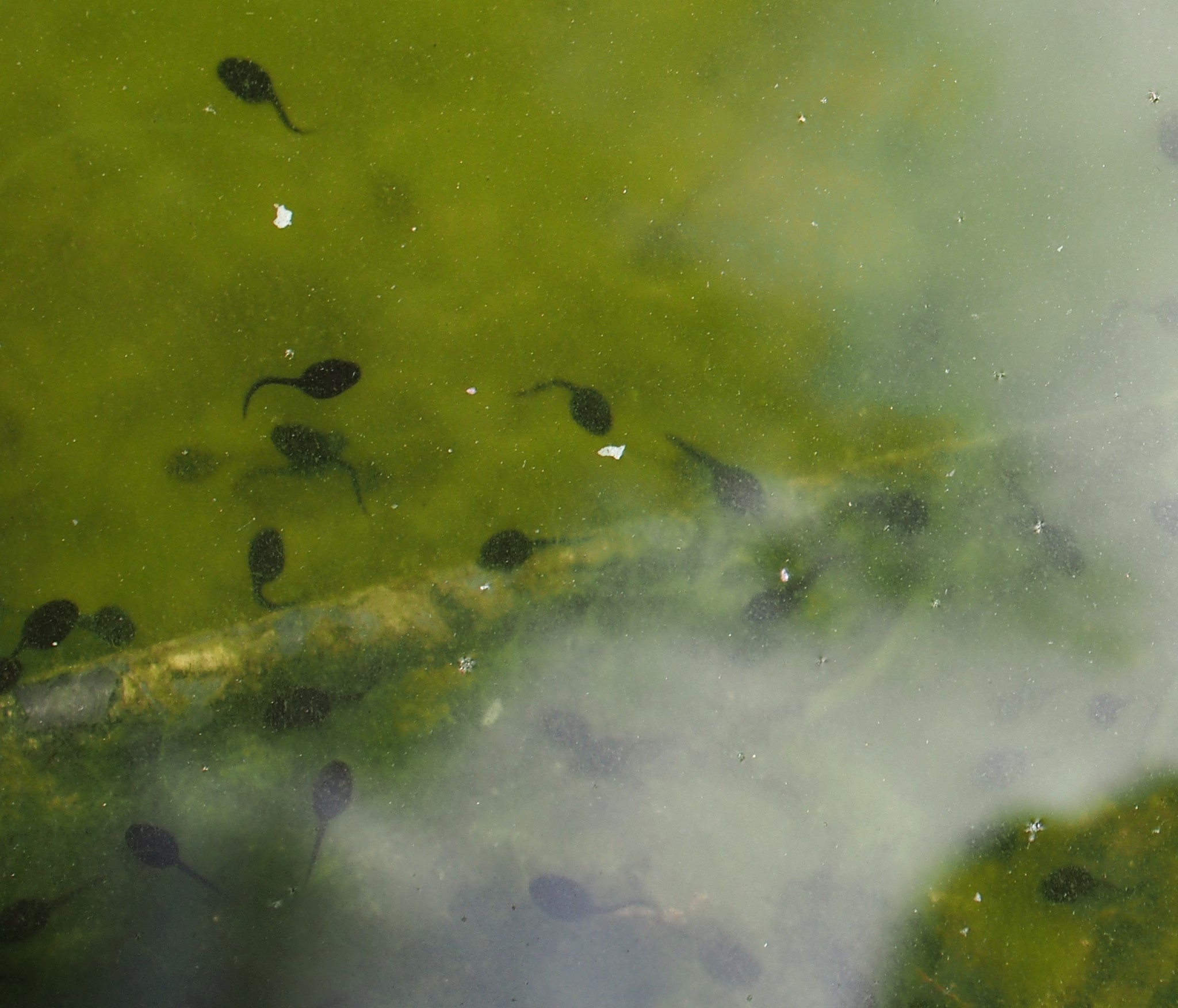
I have been studying Frog genders. Comparing the size of the eyes to the eardrums is one way. Males have a much larger eardrum to eye orbit, while in Females the two are about equal in diameter. Of course, only the Males speak. I'm pretty sure on both counts that Tonguey is a Male. The other Frog in this picture seems to be a Female. Picture 2 seems to be of a Female. Picture 3 looks like a Male to me.
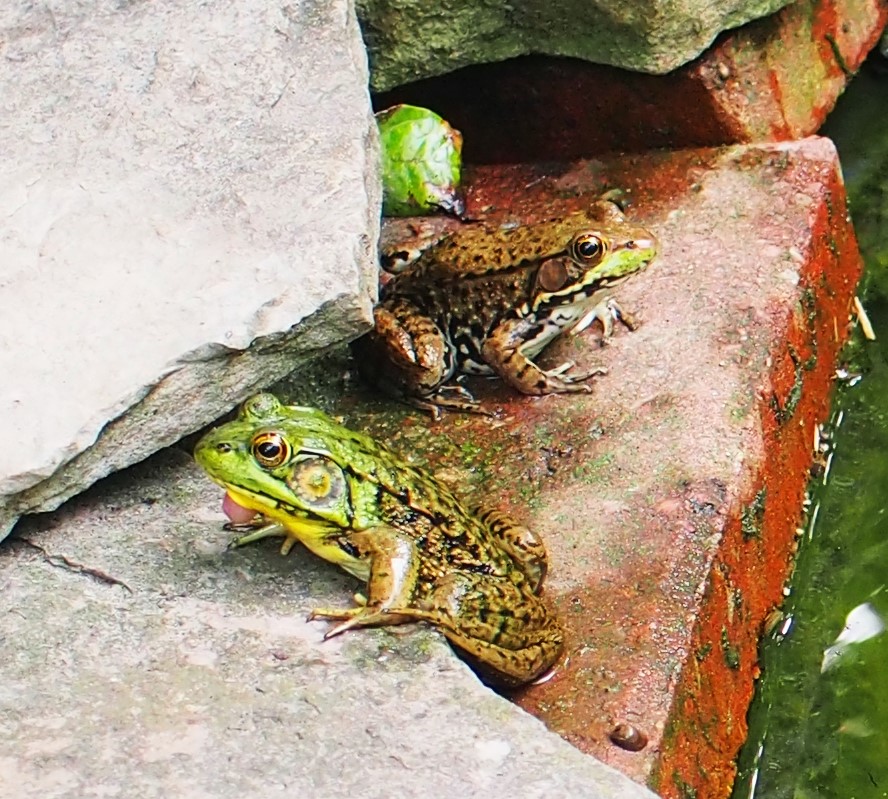
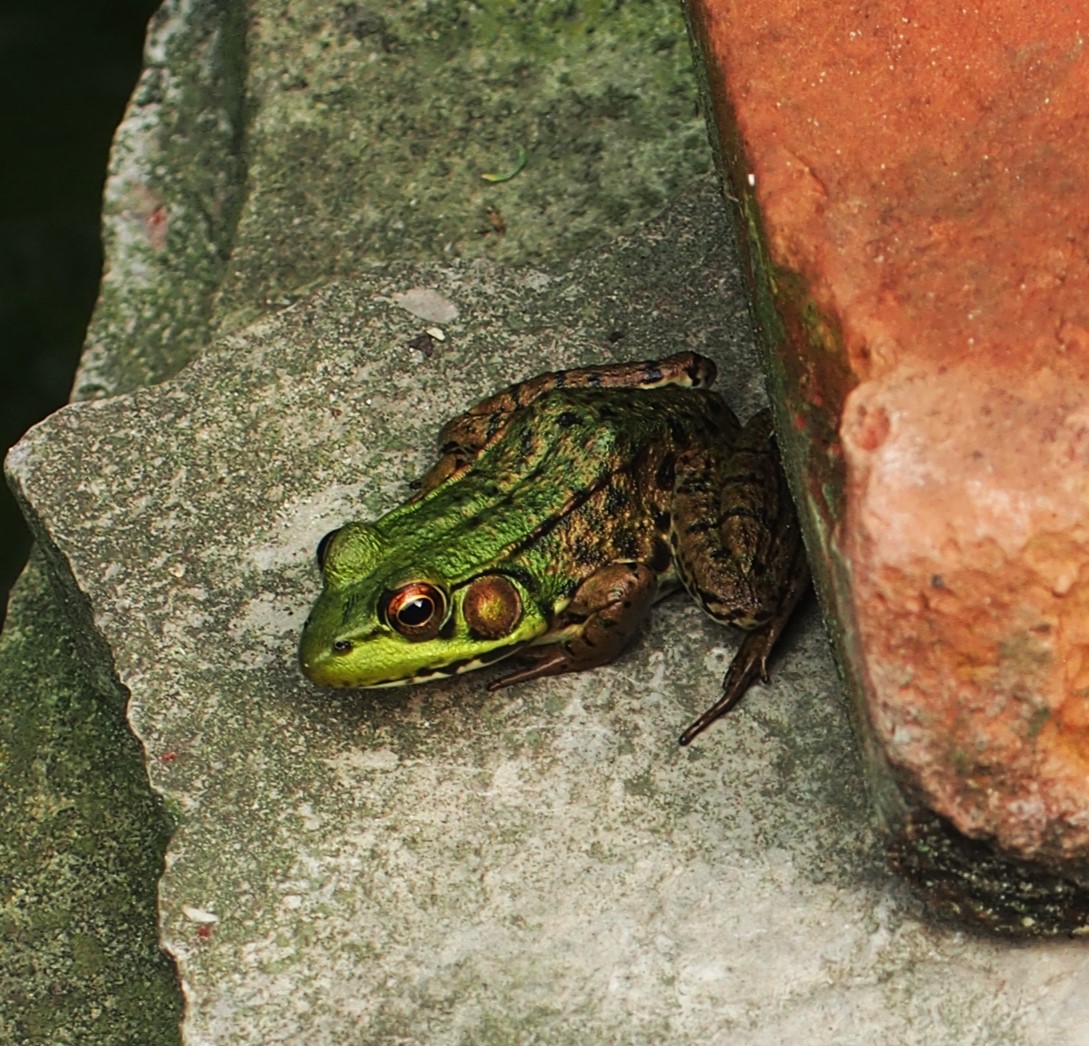

I thought at first this Wasp was the one we used to call a Mud Dauber, but the match in iNat seemed to place it with the Large Black Hunting Wasp.
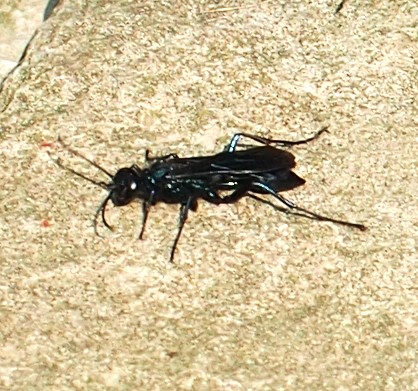
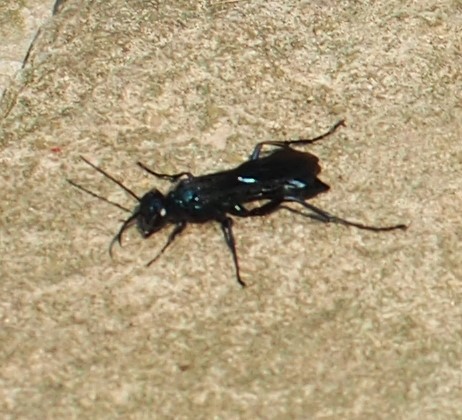
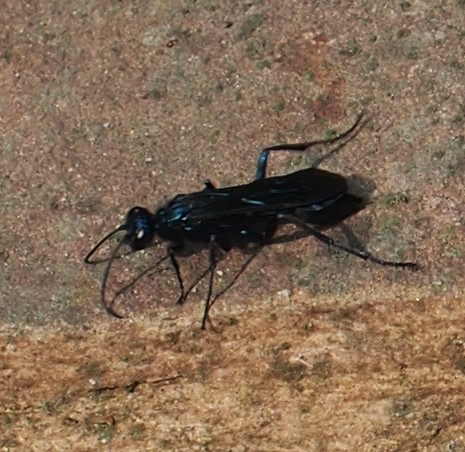
Let's watch the fishes for a while. You probably remember when the youngest fish was barely visible. NOW she is eagerly gobbling lunch with the other members of the family! I've been trying to think of a name for her. I think Hedda will work - she's such a Gobbler. What'cha think?

Another week by the Pond. What a lot of living goes on in there. I hope there is also a lot of life going on where you are!
Love, Martha
Back to June 25, 2023
Forward to July 9, 2023
Back to main menu
copyright Martha O'Kennon 2023

























































































